Liebherr LR 1750 - Sarens
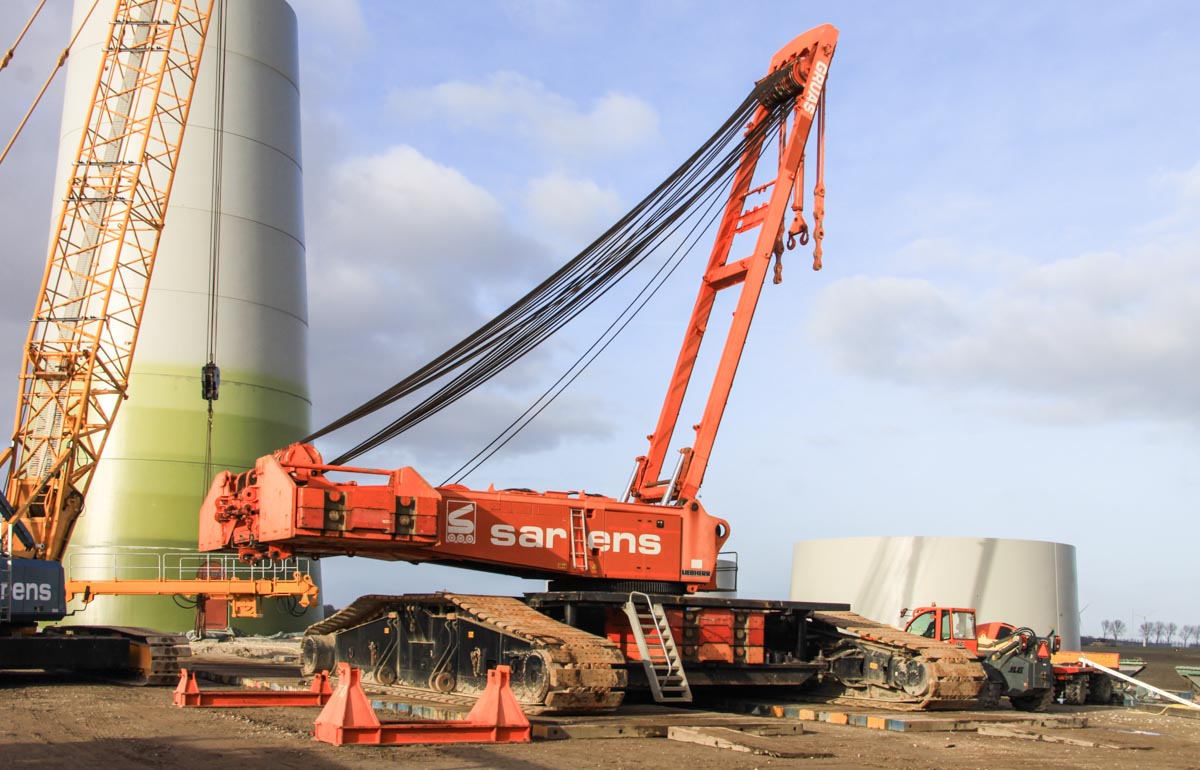
The assembly of a Liebherr LR 1750 on a windmill project. The undercarriage is meanwhile ready.
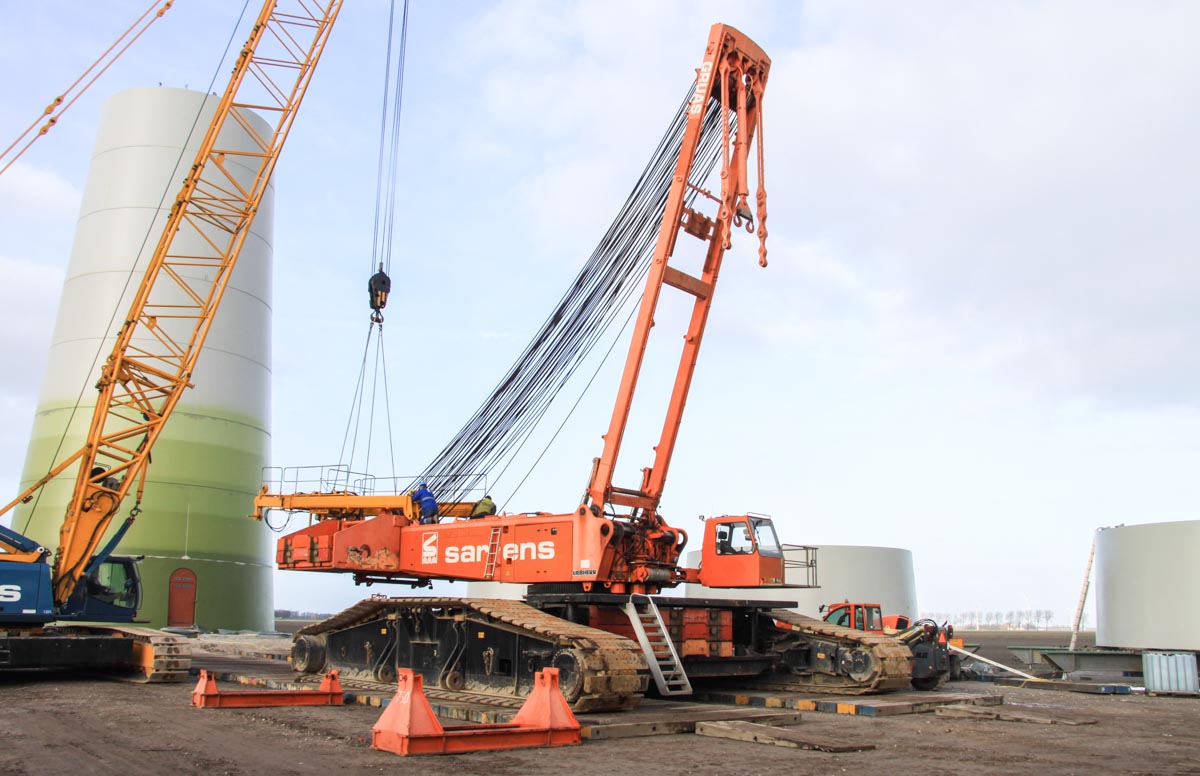
The assist crane is a Sennebogen 5500 of Sarens. Here is the hydraulic guide frame mounted.
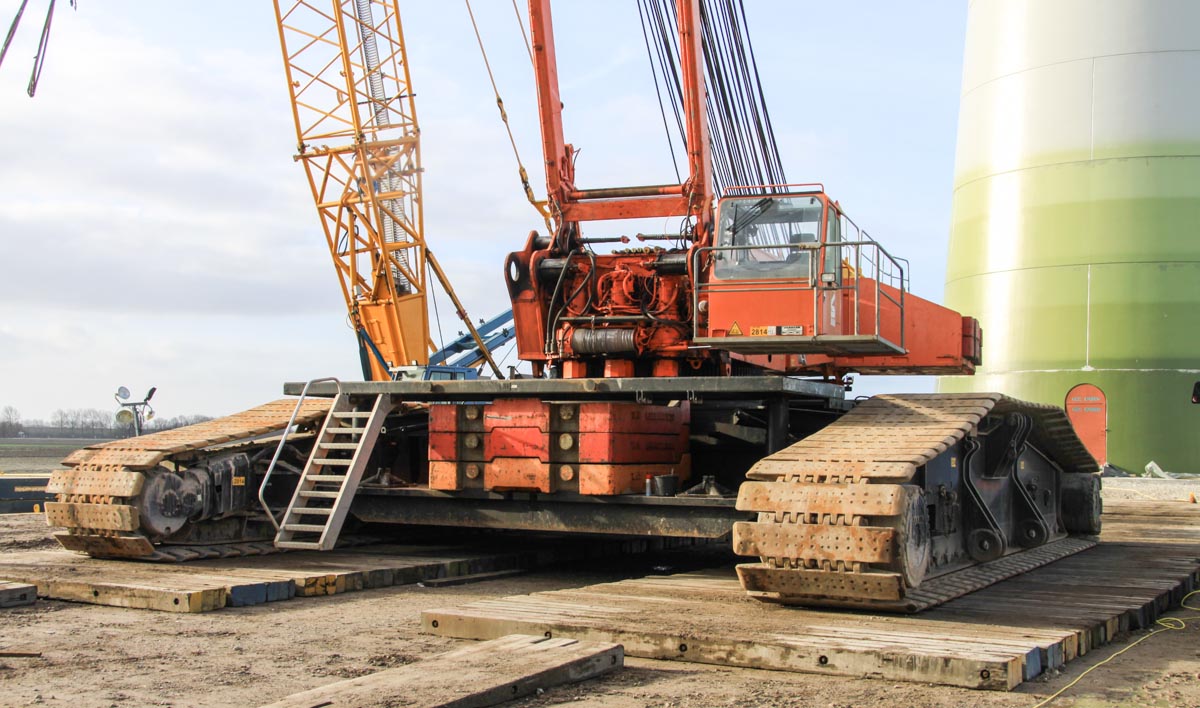
It is an used crane of Gruas Sierra from Spain.
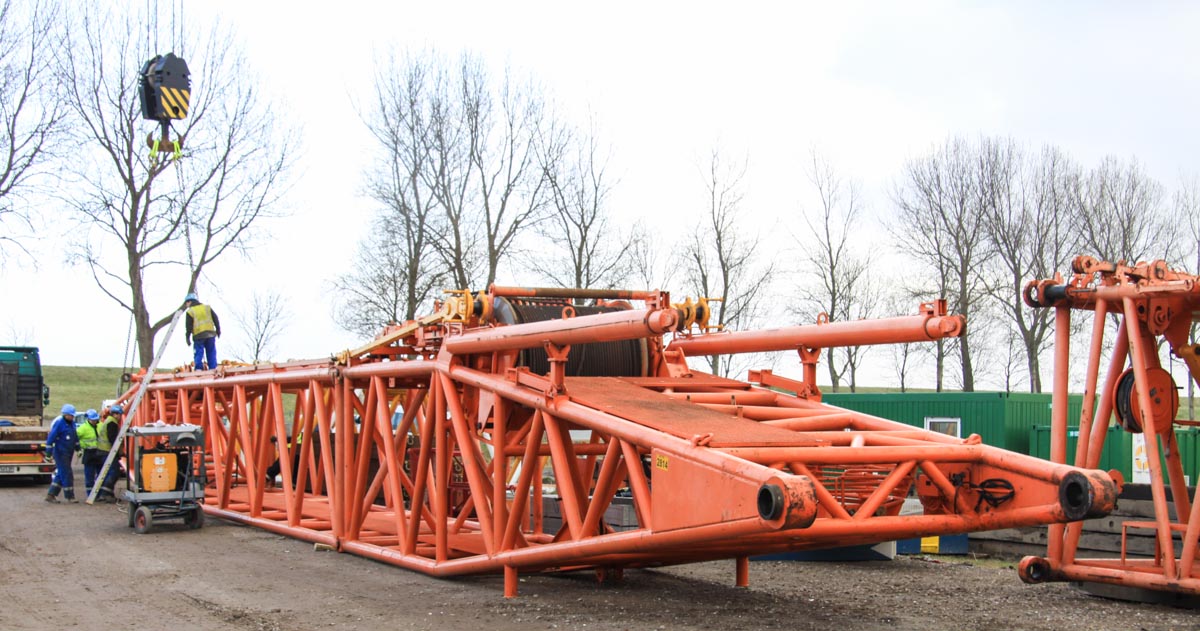
The derrick boom with a length of 31.5 metres exists out of a boom foot, boom section and boom head.
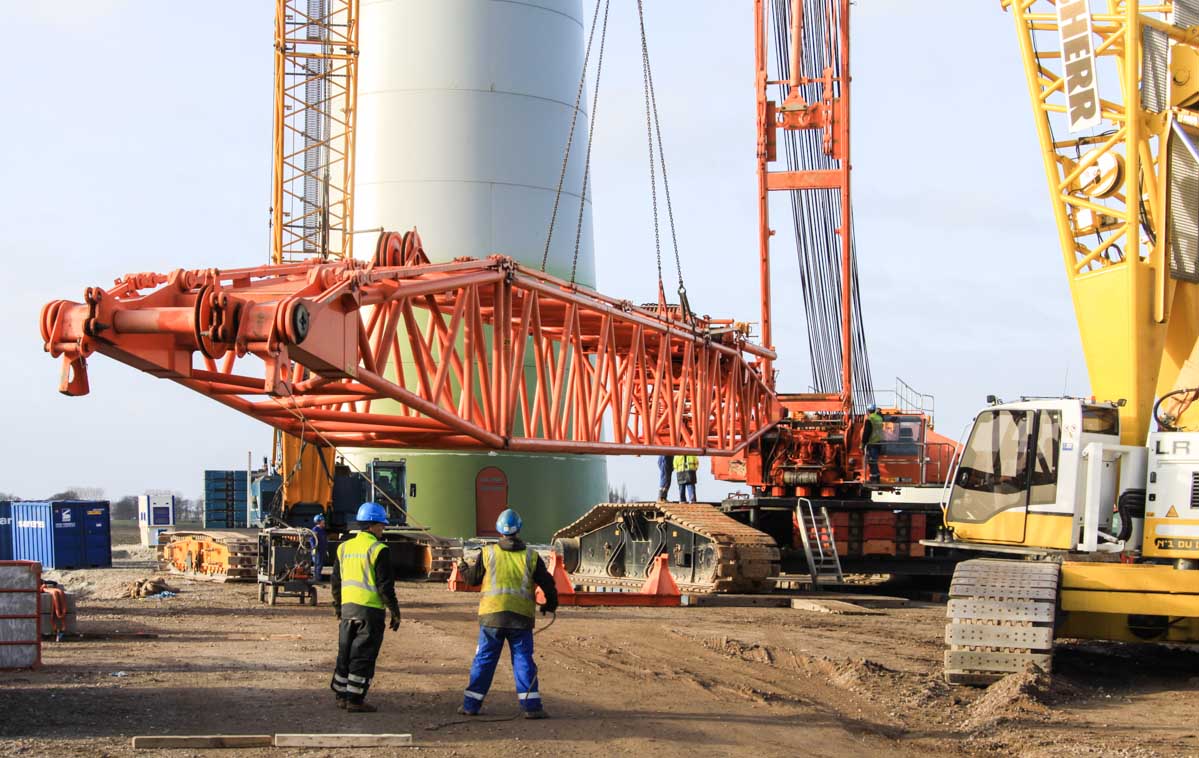
Here is the boom hang in by the Liebherr LR 1300 of Sarens.
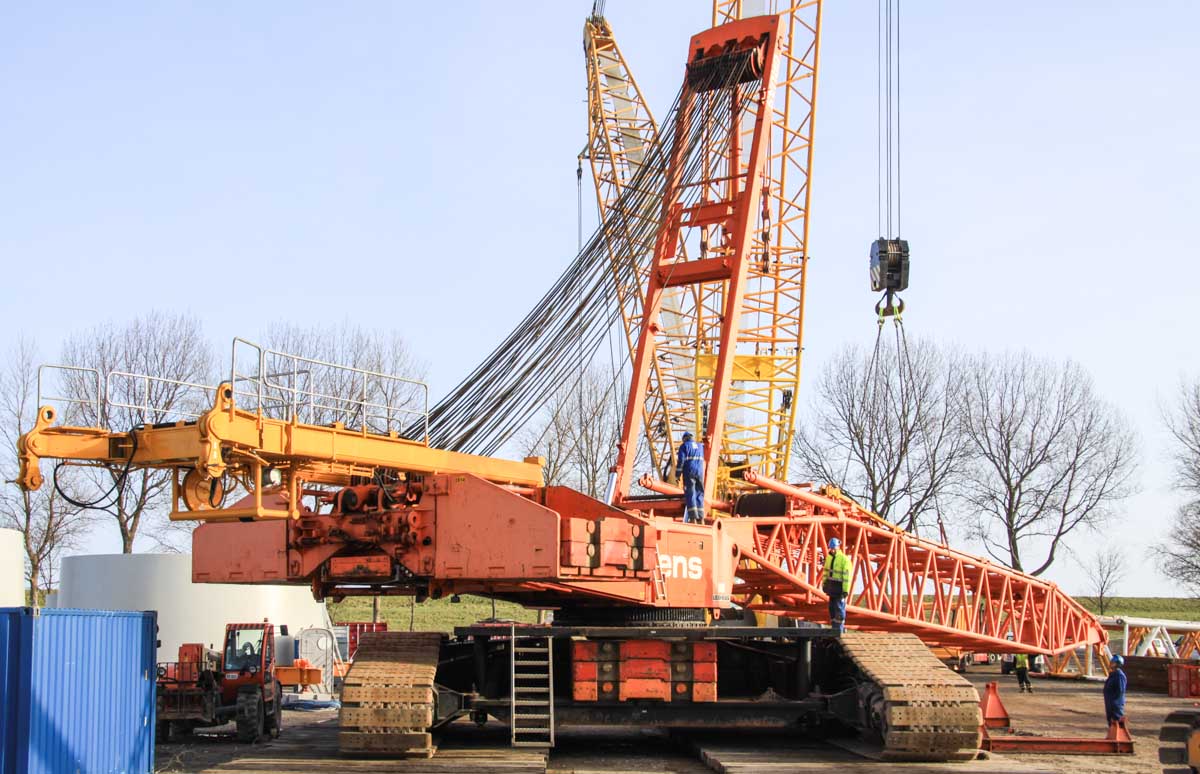

The adjustment of the main boom is made in the derrick boom. The adjustment winch is made in the boom foot. Here is the bridle attached to the boom head.
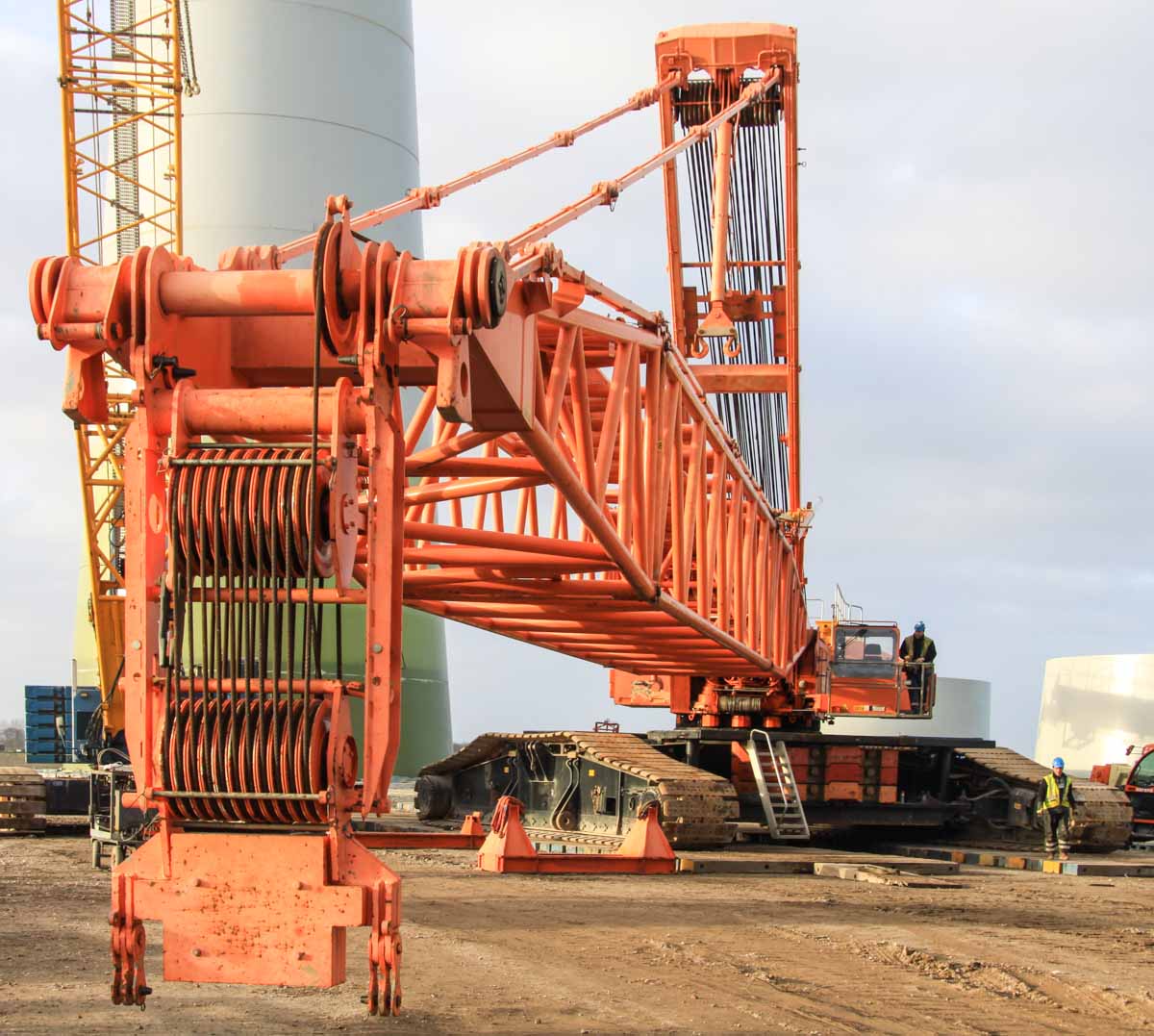
On the lower bridle is attached a piece of counterweight to keep enough tension in the cables when the bridle is lowered.
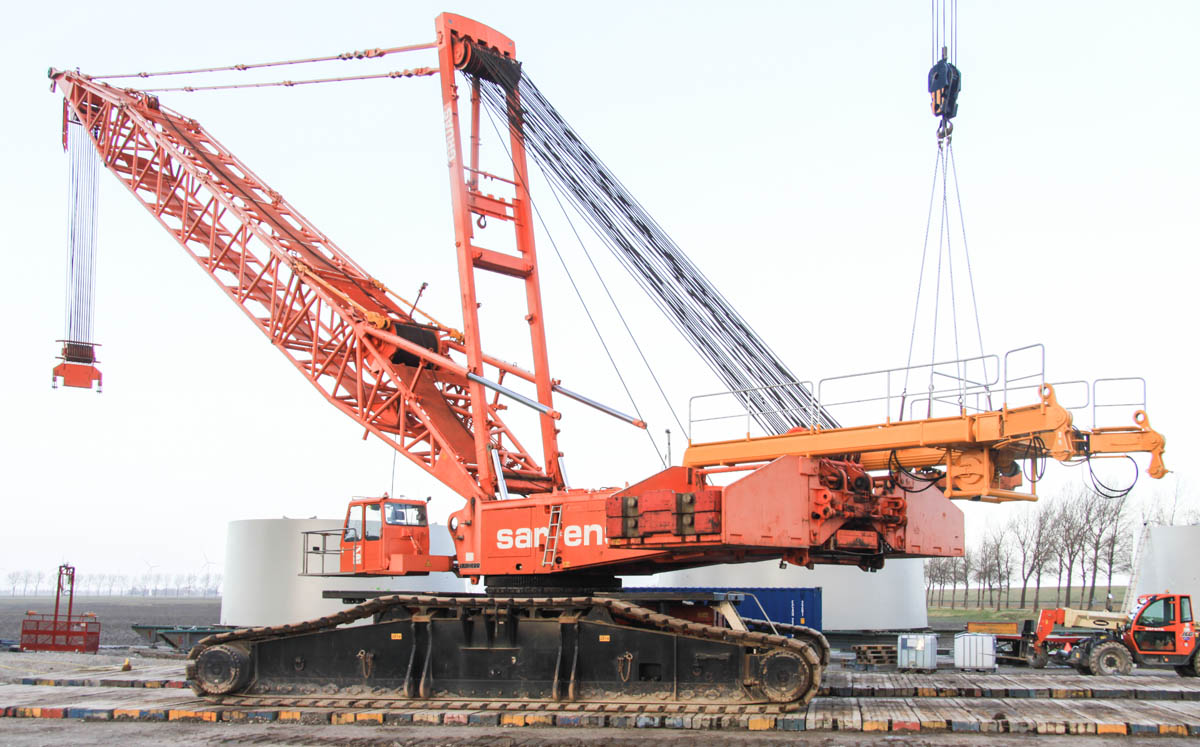
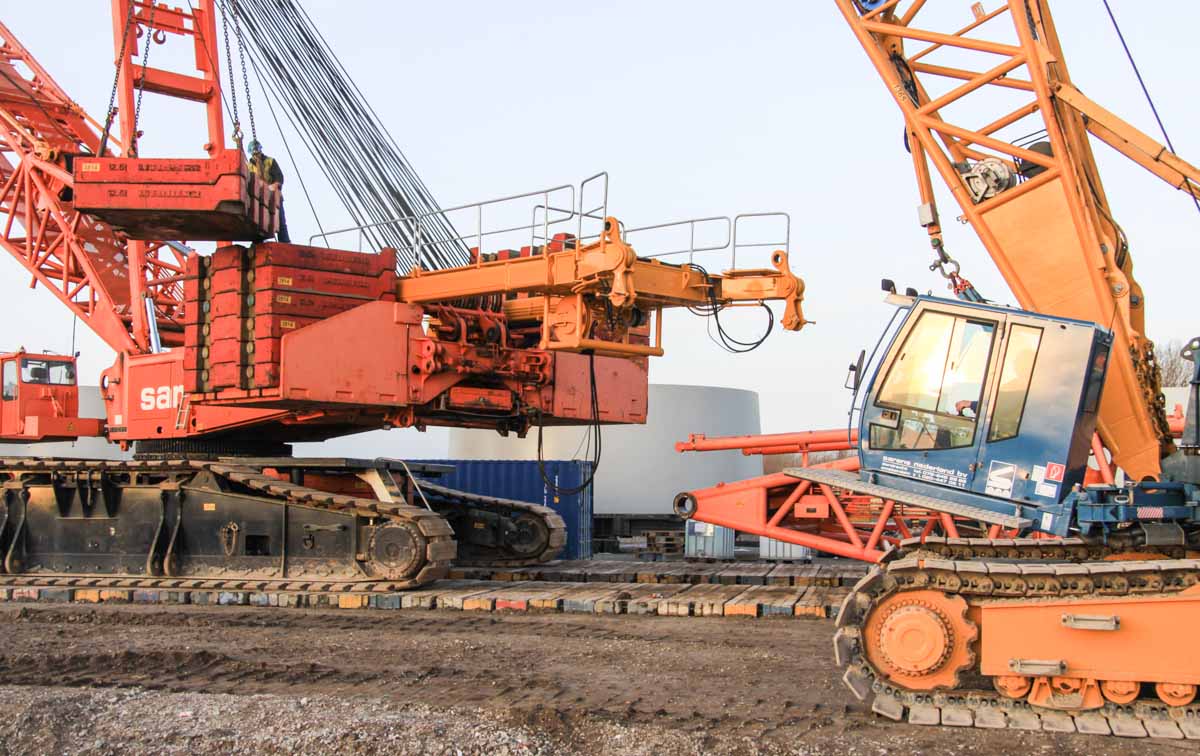
The superstructure counterweight is enlarged to 220 tonnes. In each chair (10 tonnes) are lay down 8 slabs of each 12.5 tonnes.
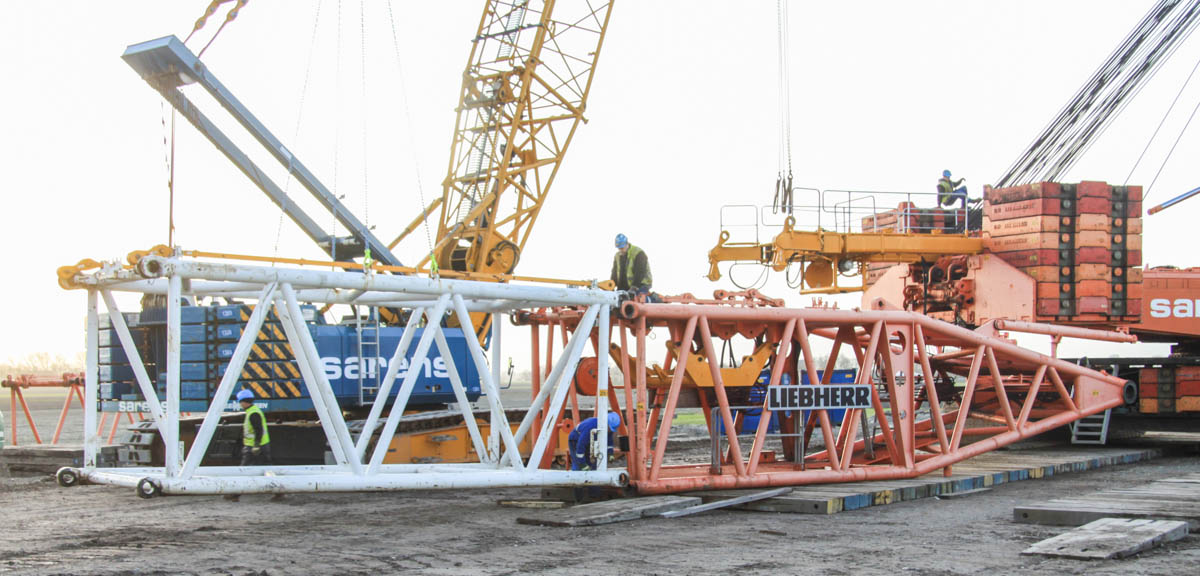
Starting with the main boom, attached to the boom foot is a 7 meter boom section.
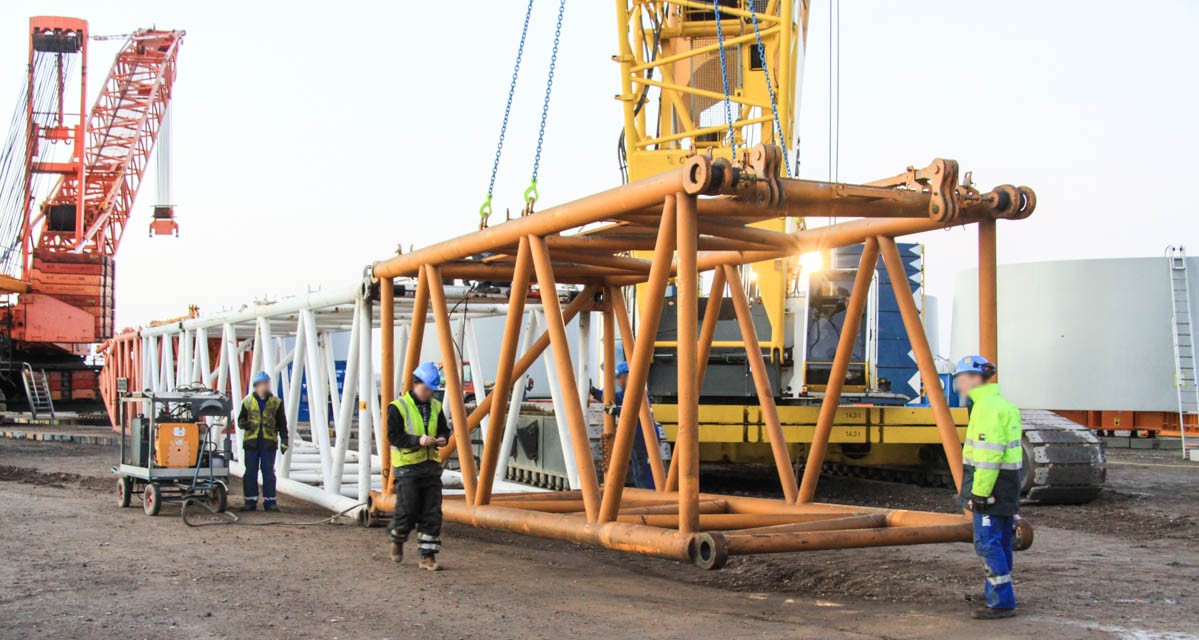
And after a 12 meter section, another 7 meter section.
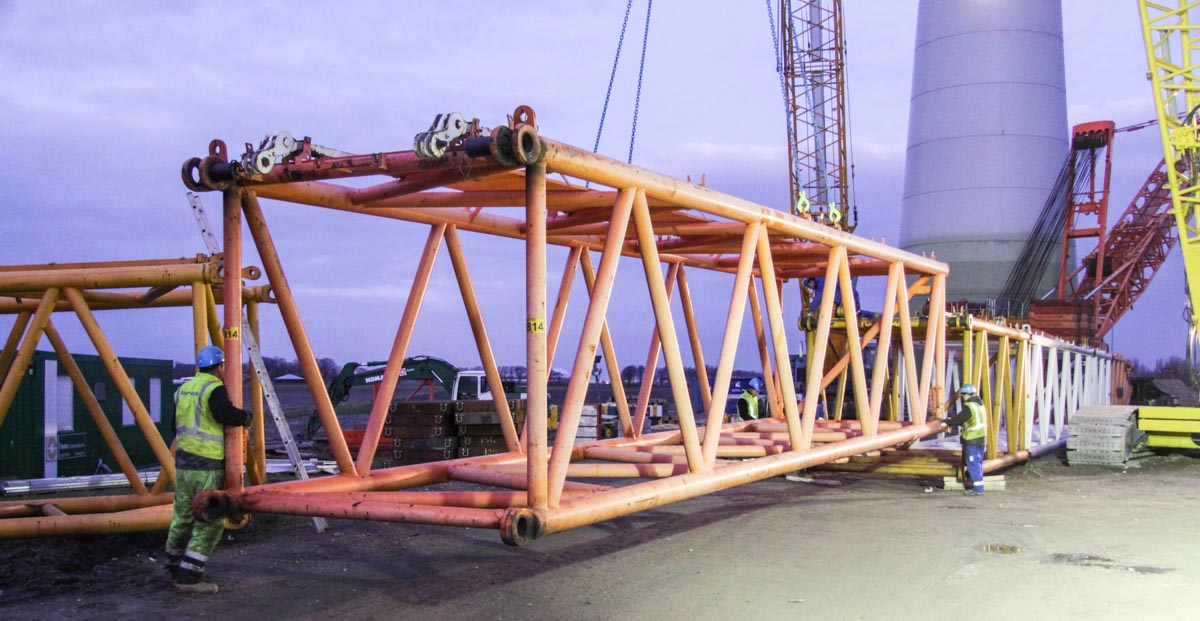
The next day, very early is the job continued. Here is another 12 metre boom section attached.
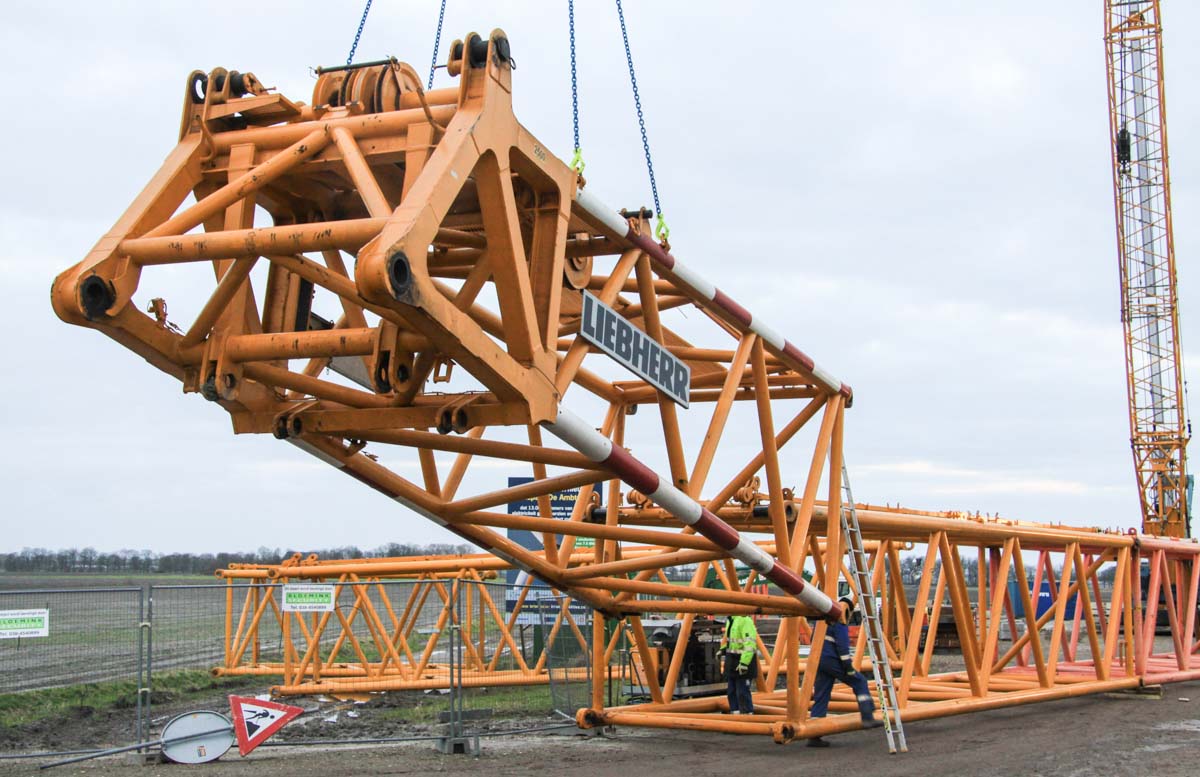
After another 12 meter boom section comes the boom head. That makes the main boom 77 meters long.
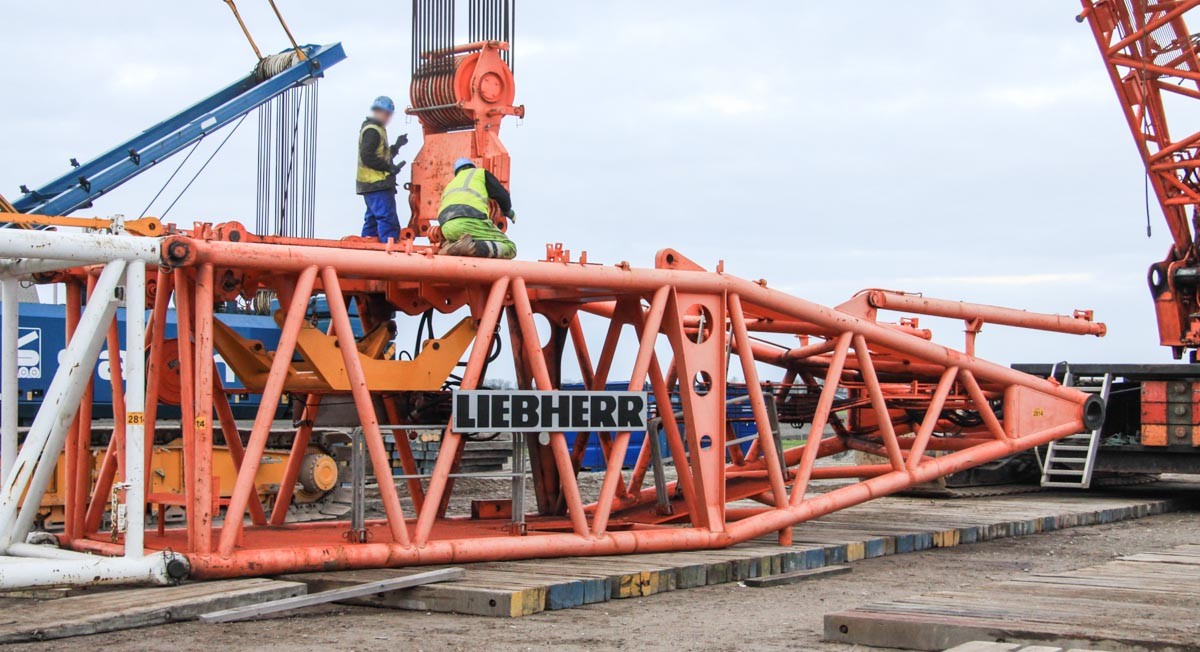
When the main boom is assembled the derrick boom bridle is attached to the boom foot.
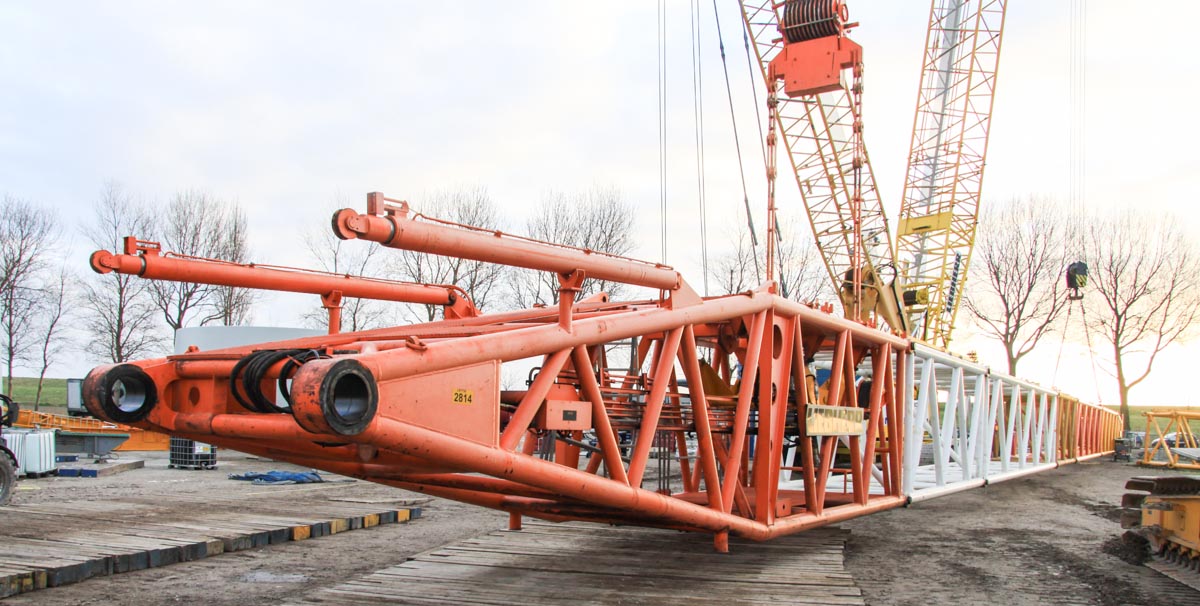
And the LR 1300 to the front piece. In tandem are both cranes hoisting the derrick boom...
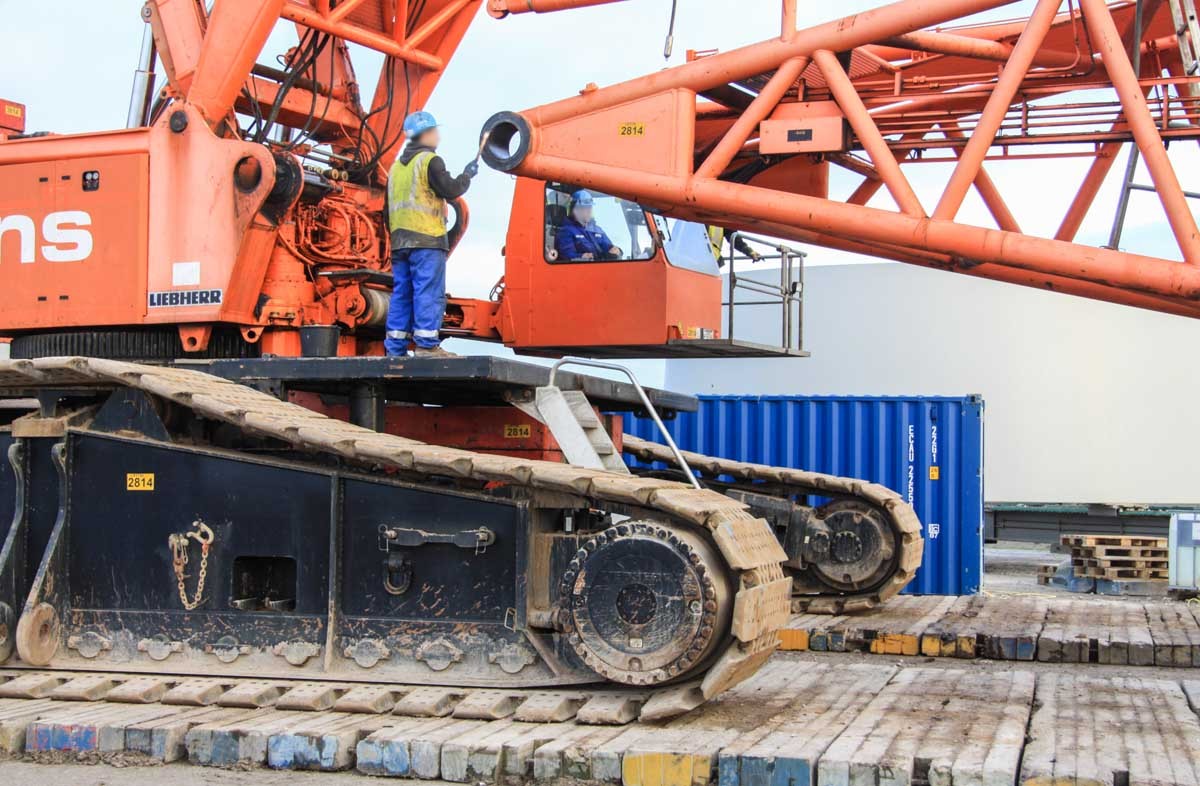
... to attach the main boom to the superstructure of the LR 1750.
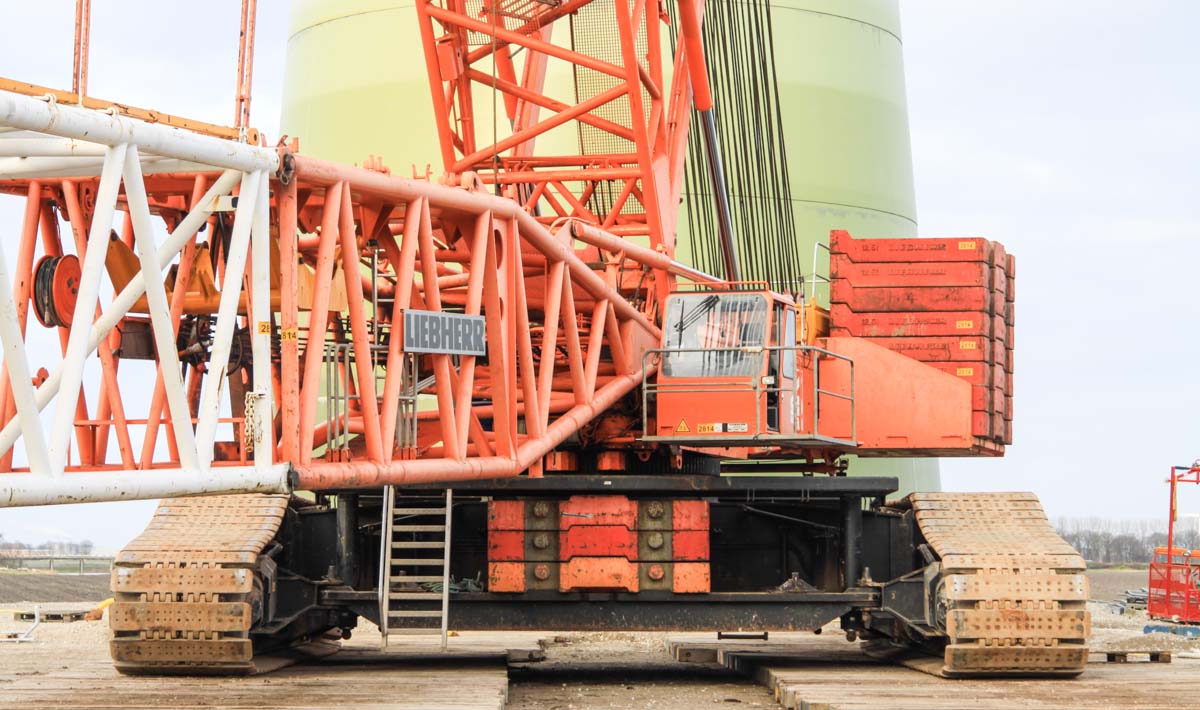
The crane is 10.3 meters wide. In total is 75 tonnes of central counterweight used on the crane.

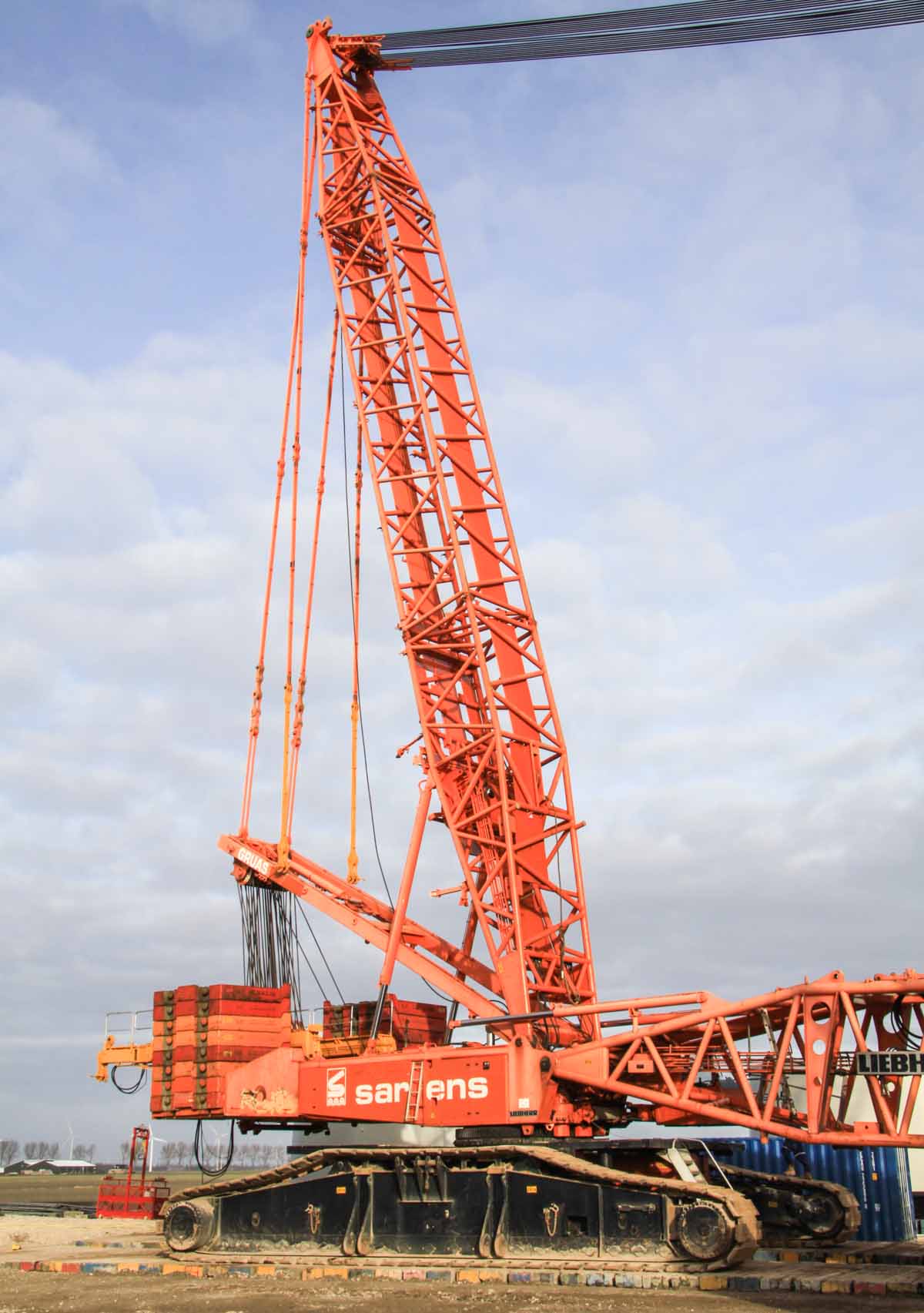
When the pendants to the main boom head are attached to the bridle of the derrick boom, the derrick boom is pulled backwards. That hapens when at the same time the derrick boom is boomed up and the main boom boomed down.
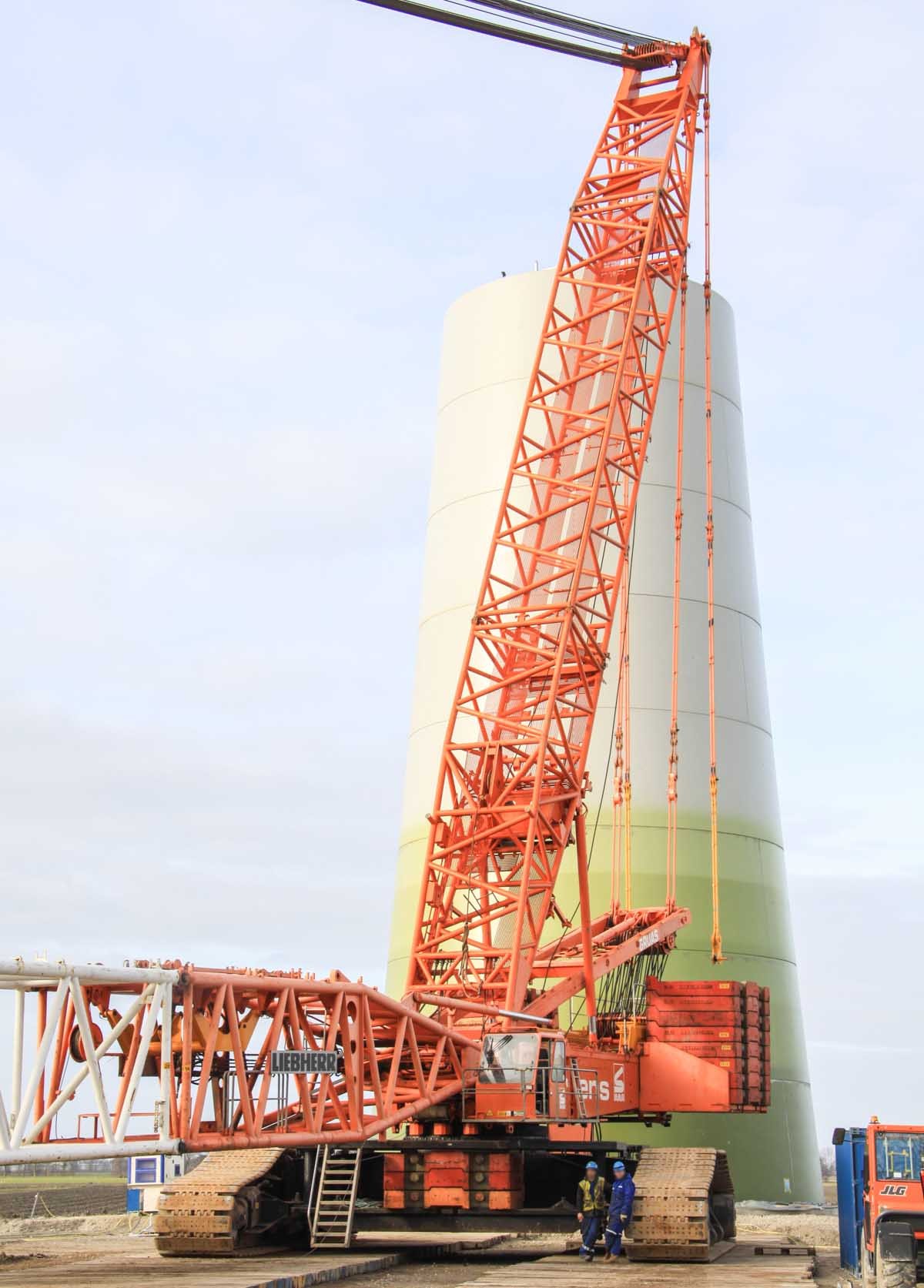
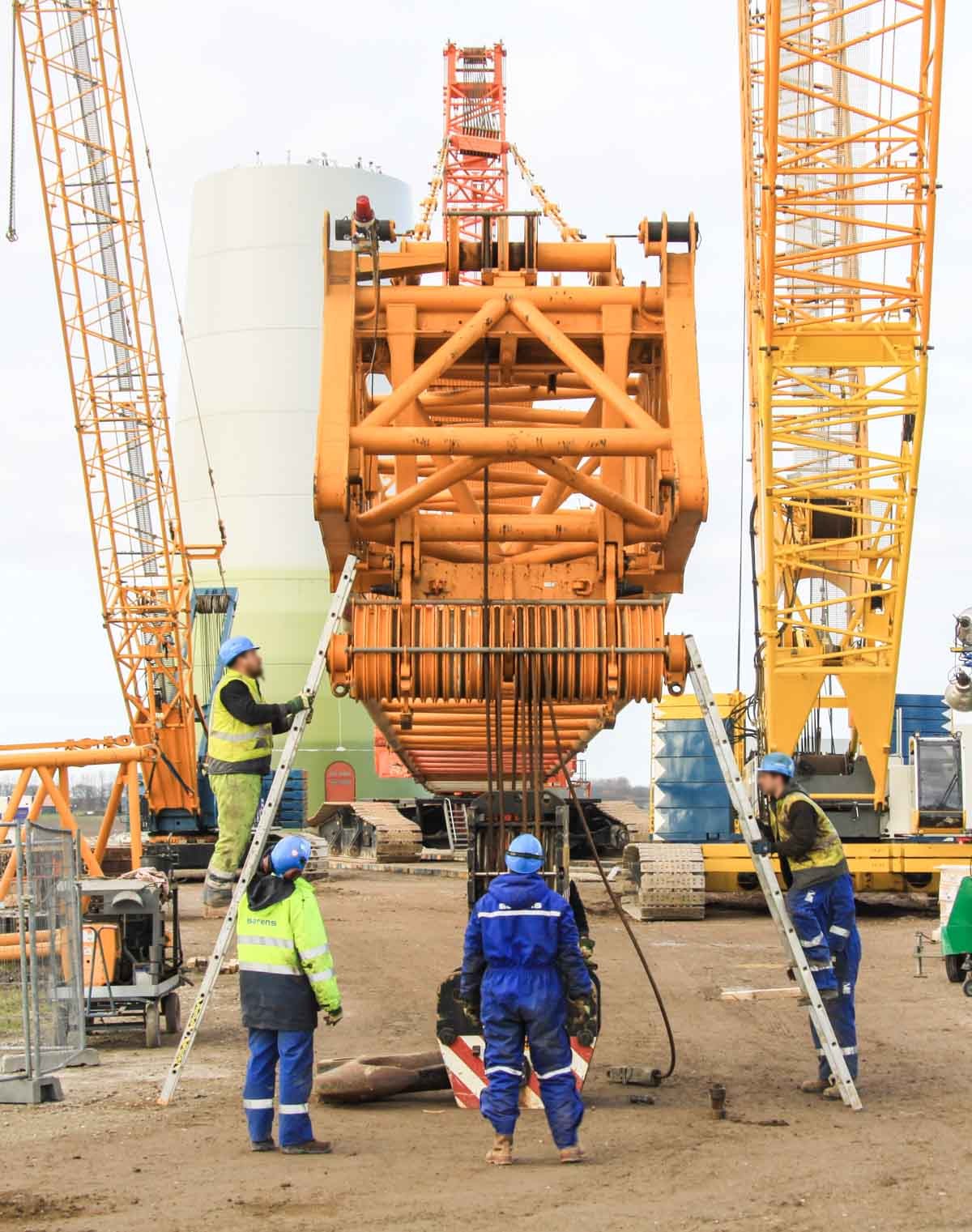
Reefing the 215 tonne load hook on 8 lines.
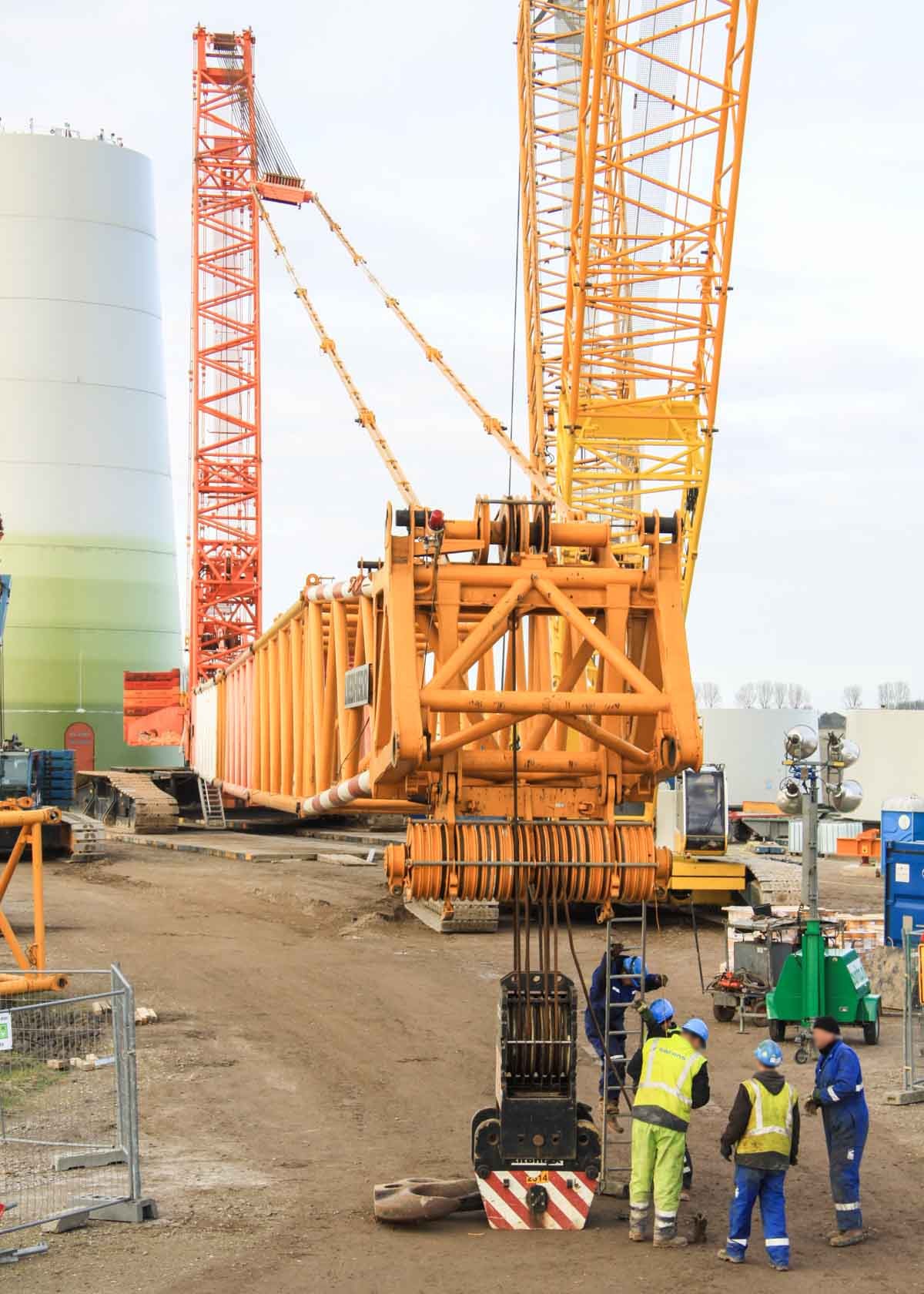
In this configuration shall the crane hoist some rings for the windmill (in the background), those rings weight about 120 and 95 tonnes.
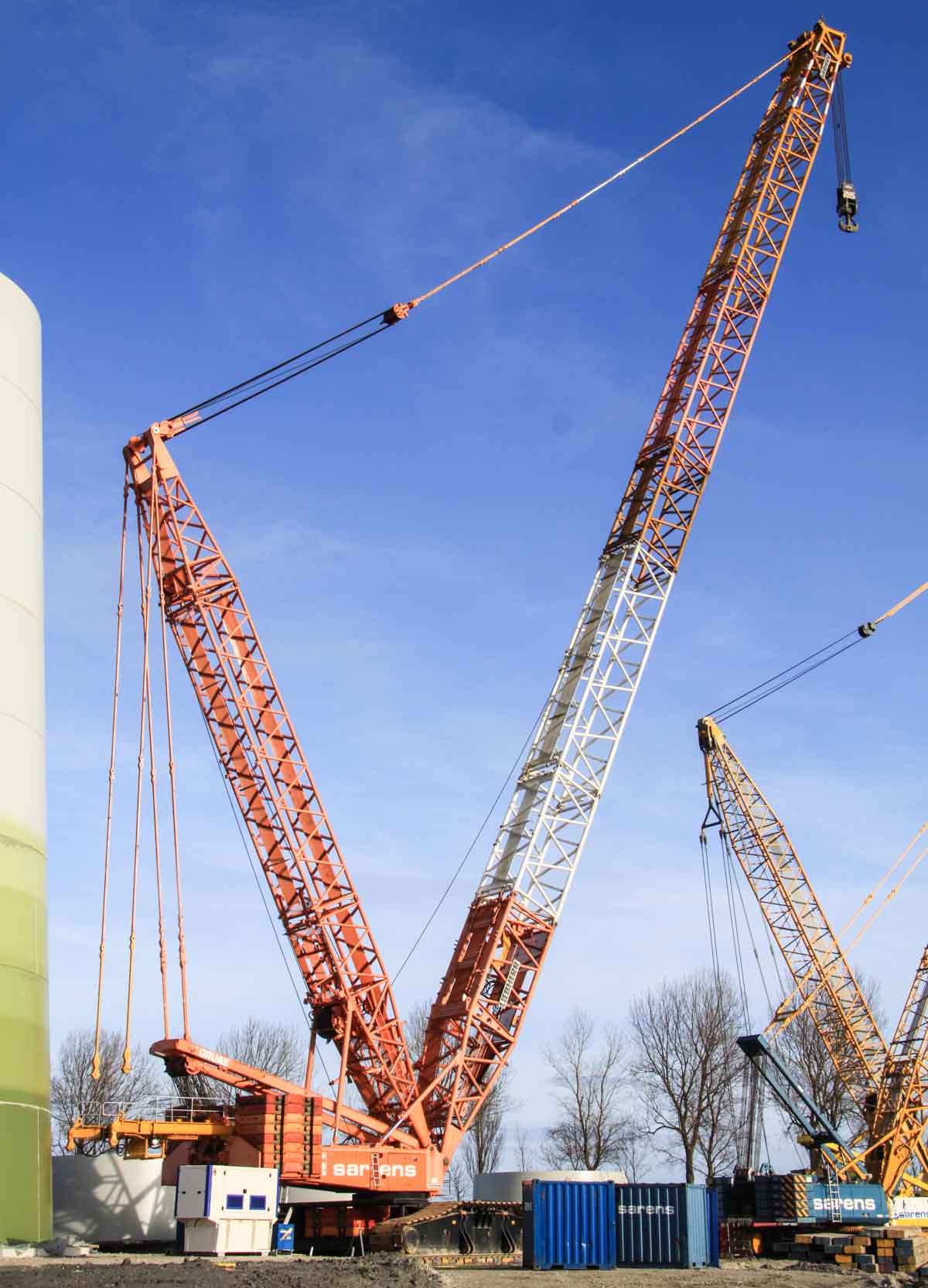
After one and a half day of work the crane is put up with 77 meters of main boom and 31.5 tonnes of derrick boom.
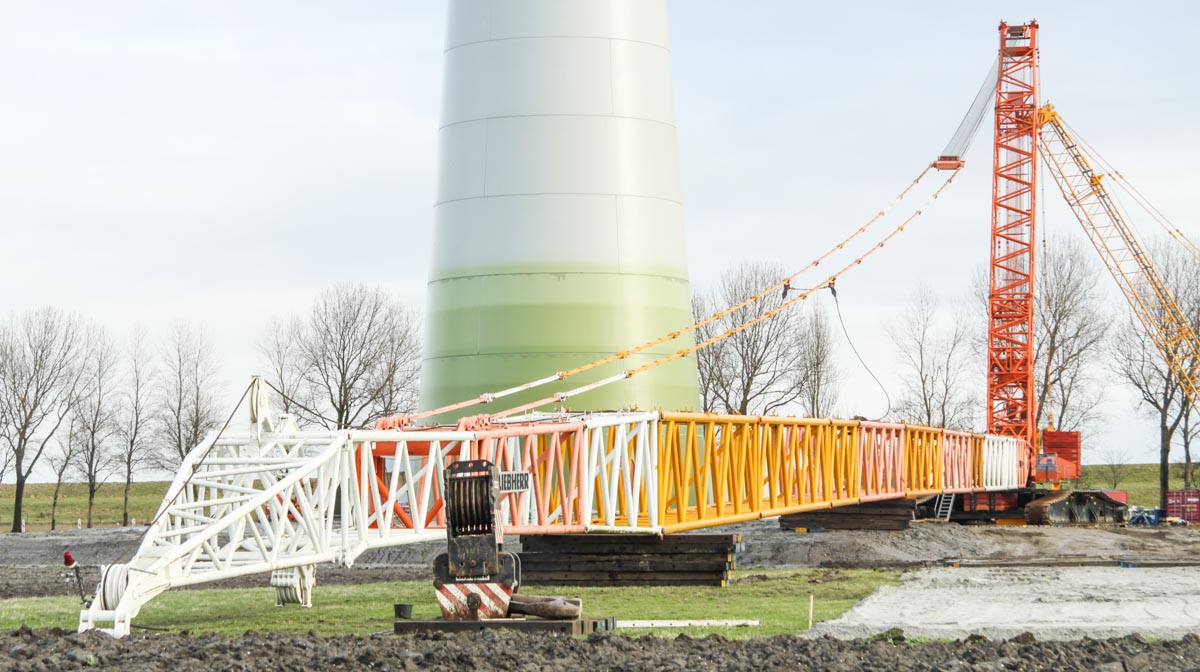
Some days later it is necessary to extend the main boom. The crane is now put up in SL7DHS version with 140 meters of main boom and a 6 meter windmill jib.
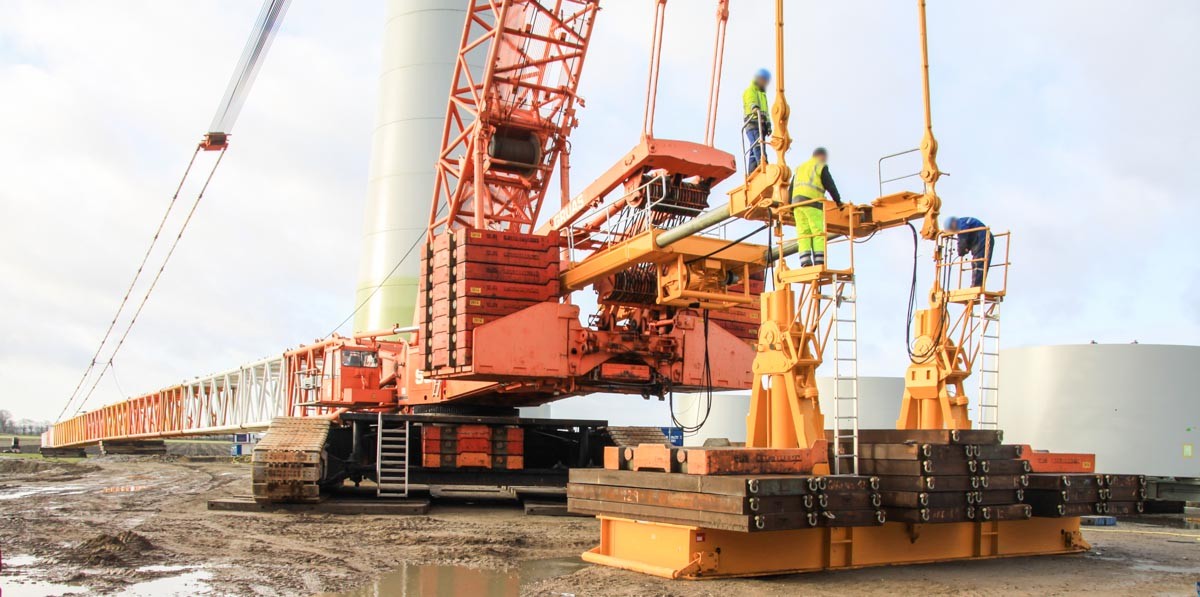
To boom up the main boom is 209 tonnes of suspended counterweight recuired on the tray (self 13.5 tonnes).
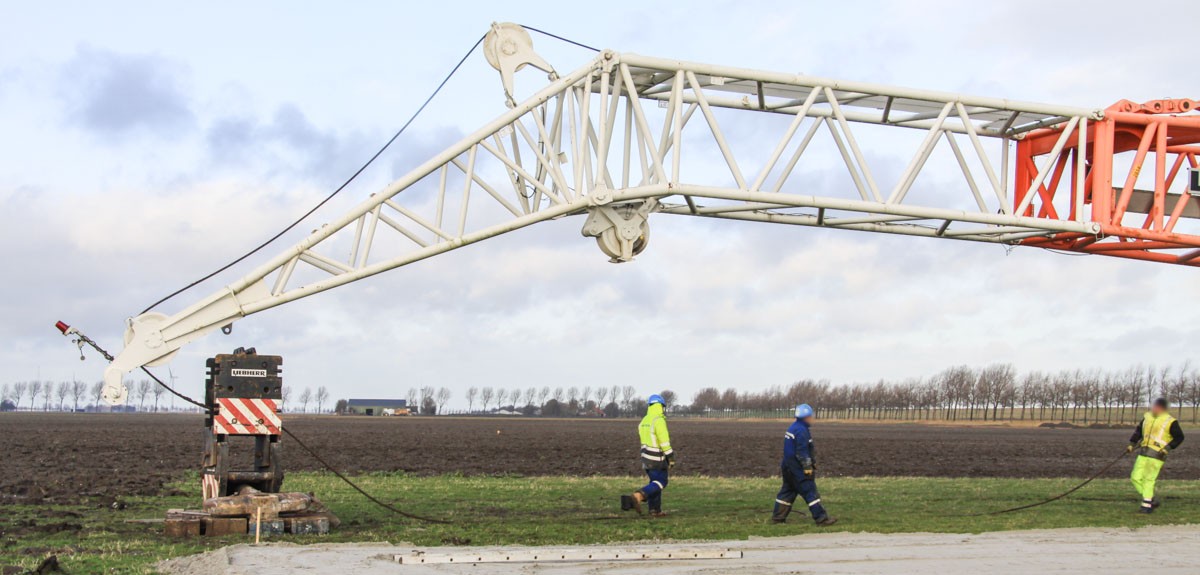
The 215 tonne load hook is also used of the windmill jib.
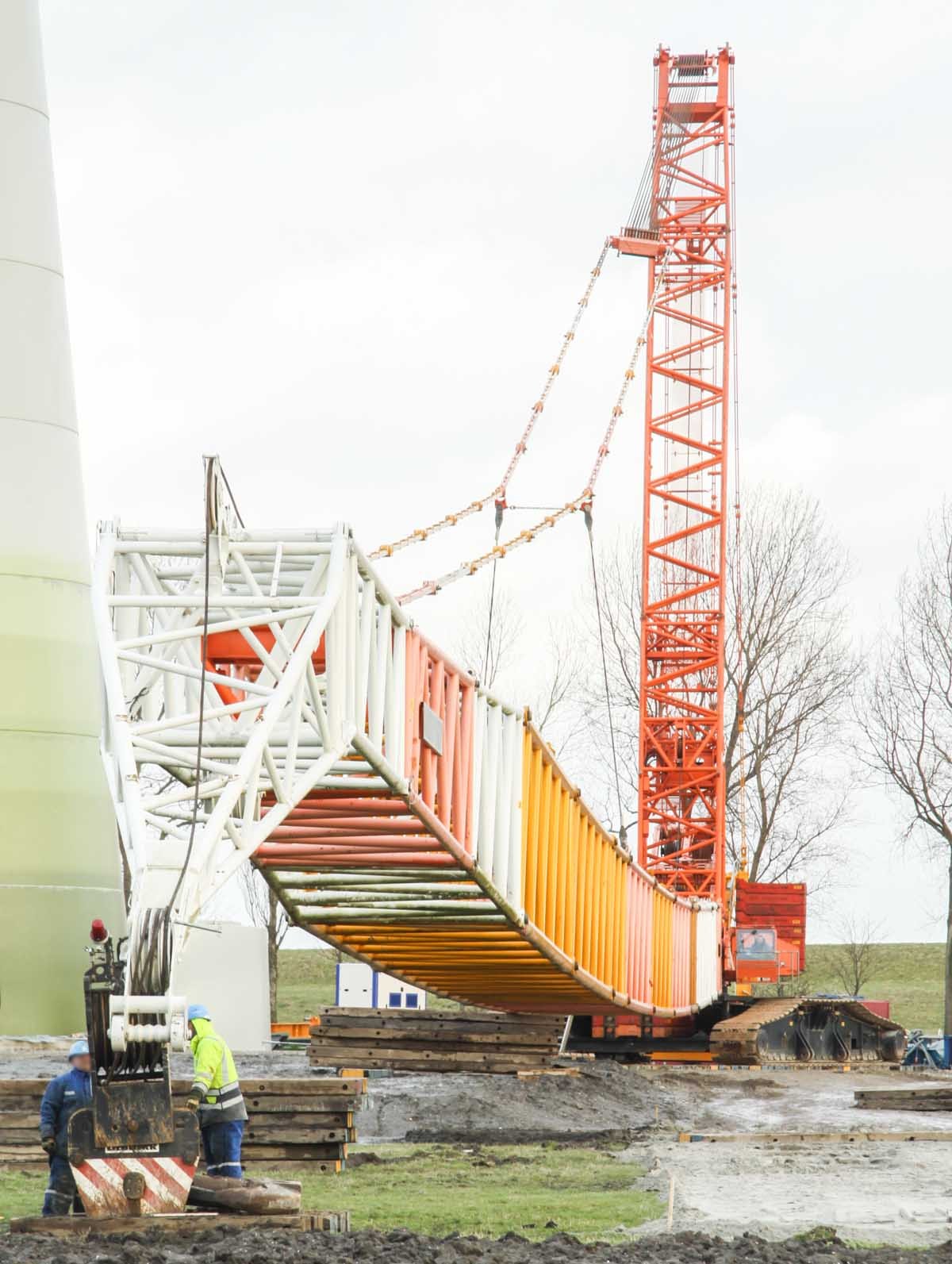
The bending of the boom is enormous when the boom is boomed up a bit.


The radius of the suspended counterweight is about 18 meters.
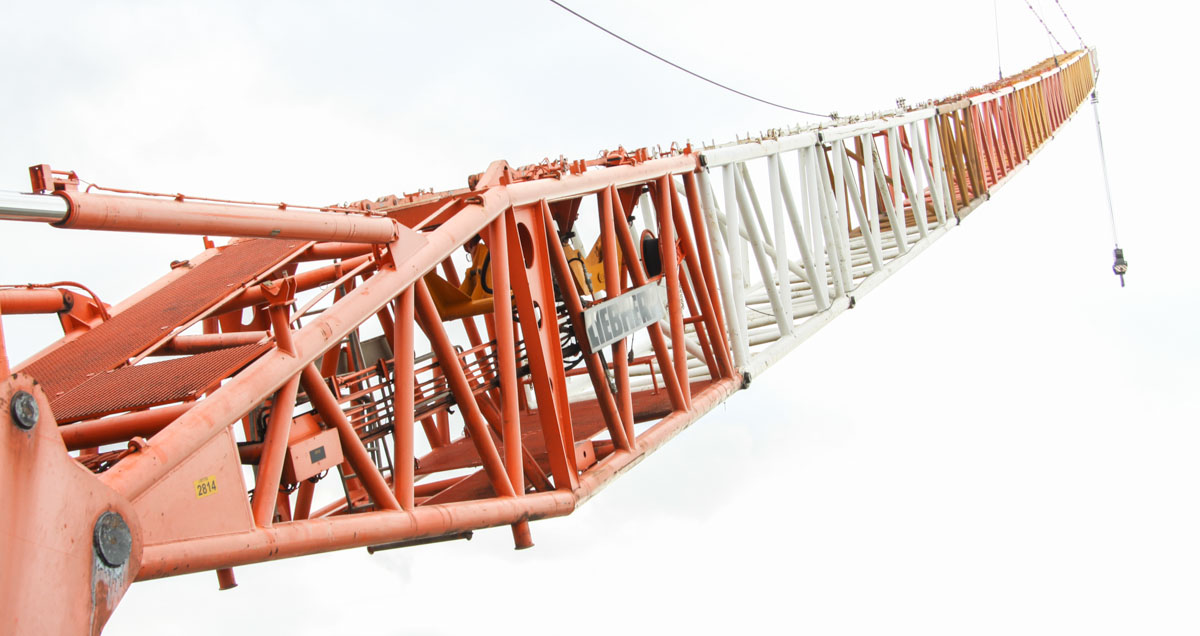
It is even possible to extend the main boom with another 7 meter to 147 meters of main boom and 6 metres of windmill jib.
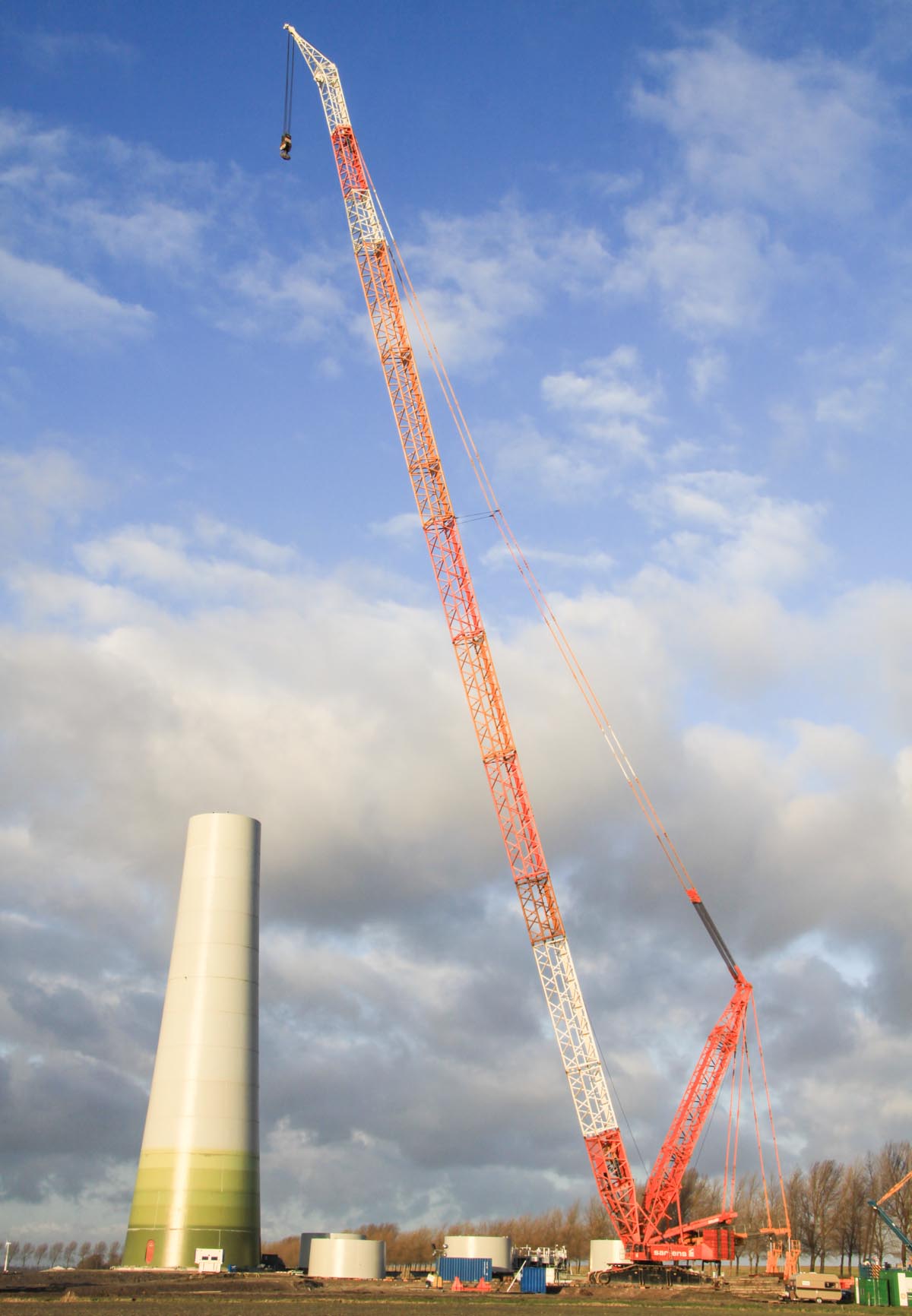
In this configuration the crane can still hoist 93 tonnes on a 20 meter radius, enough to finish the windmill tower.
Part 2

The Liebherr LR 1750 of Sarens by the construction of a windmill tower.
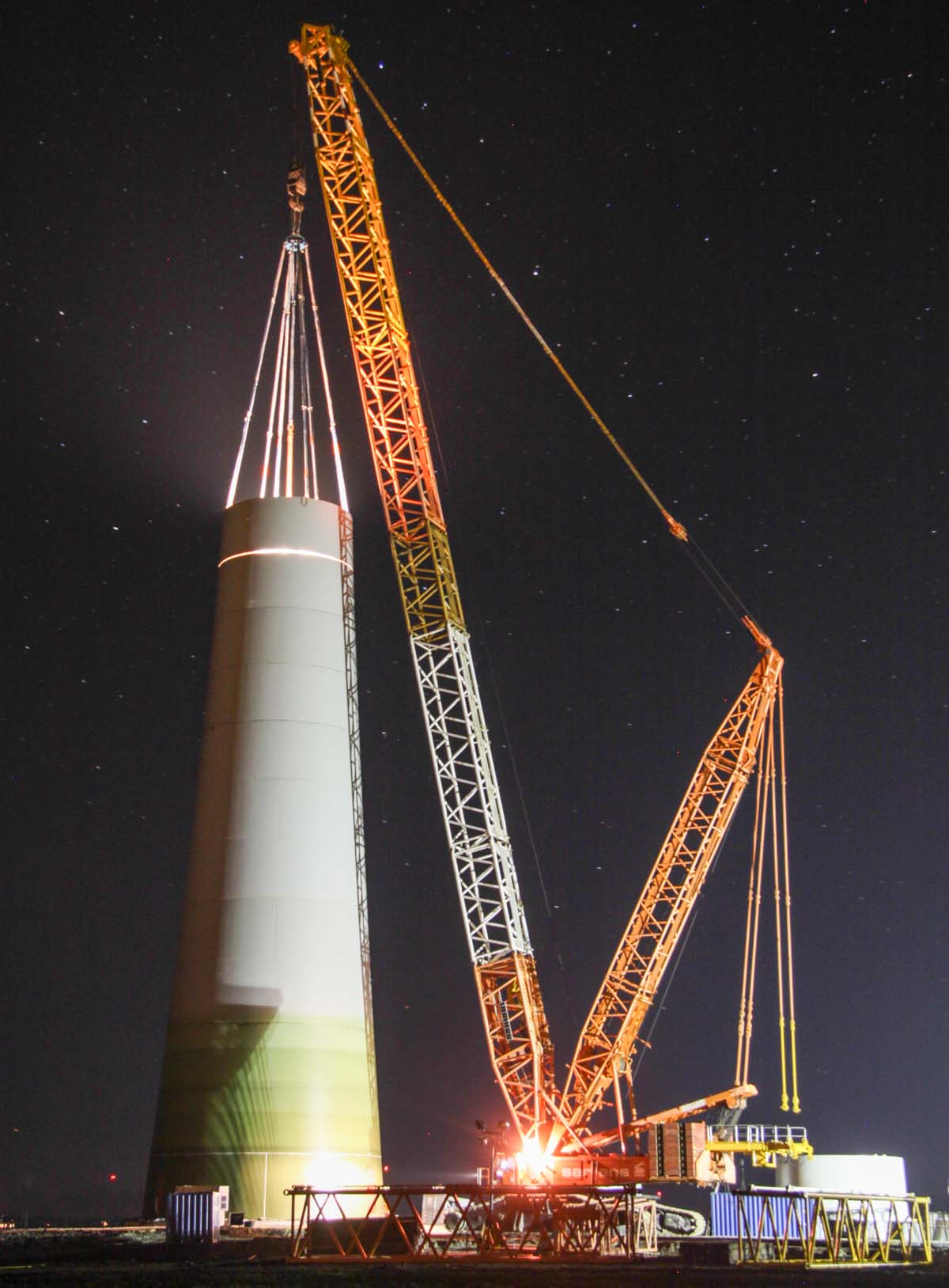
For the first fase the crane is put up with 77 metres of main boom, in this configuration some heavy rings could be hoisted. The ring hoisted on the photo weights about 86 tonnes.
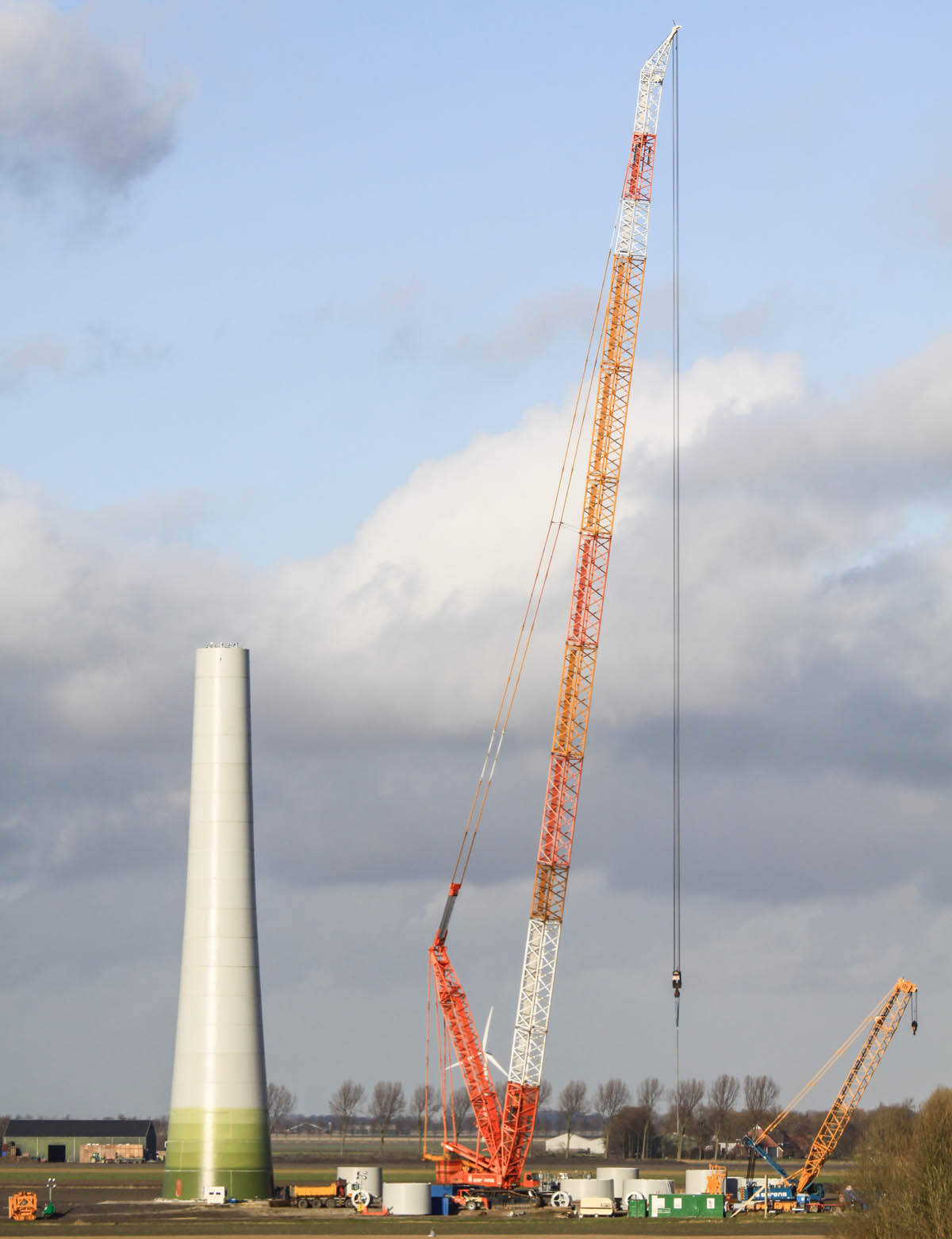
Some days later the main boom was extended to 140 + 6 meters. The crane is an used rig from Gruas Sierra from Spain.
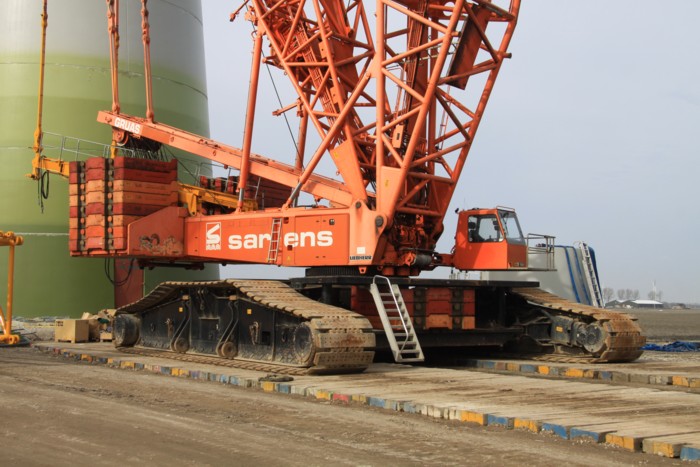
It is a 750 tonne crane.
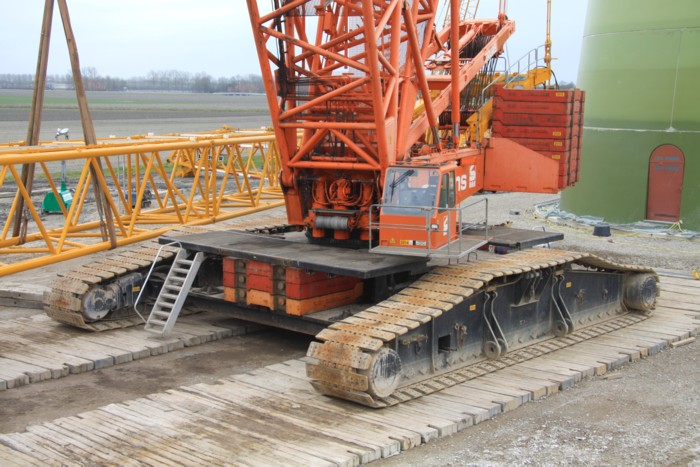
Between the cranes are on both sides 37.5 tonnes of lower weights used, 75 tonnes in total.
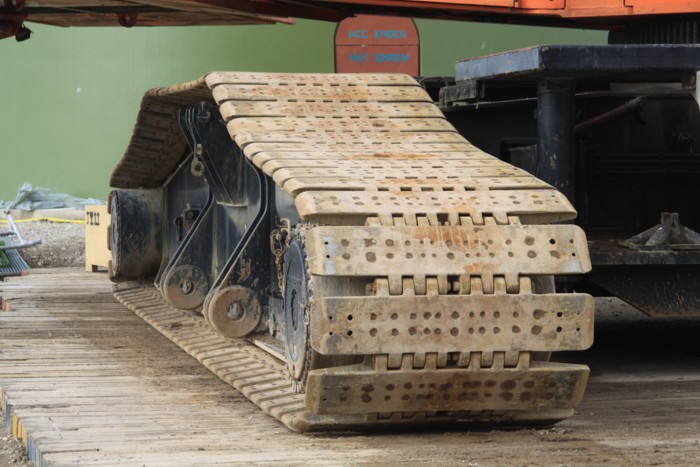
The tracks weight each 44 tonnes and are by the crane itself assembled to the undercarriage. The length is 11.9 meters, the width is 1.5 meters and the height is 2.13 metres.

It is getting busier on the construction site. Near the 1750 is a Terex CC 2800-1 put up because the 1750 has an other job to do.
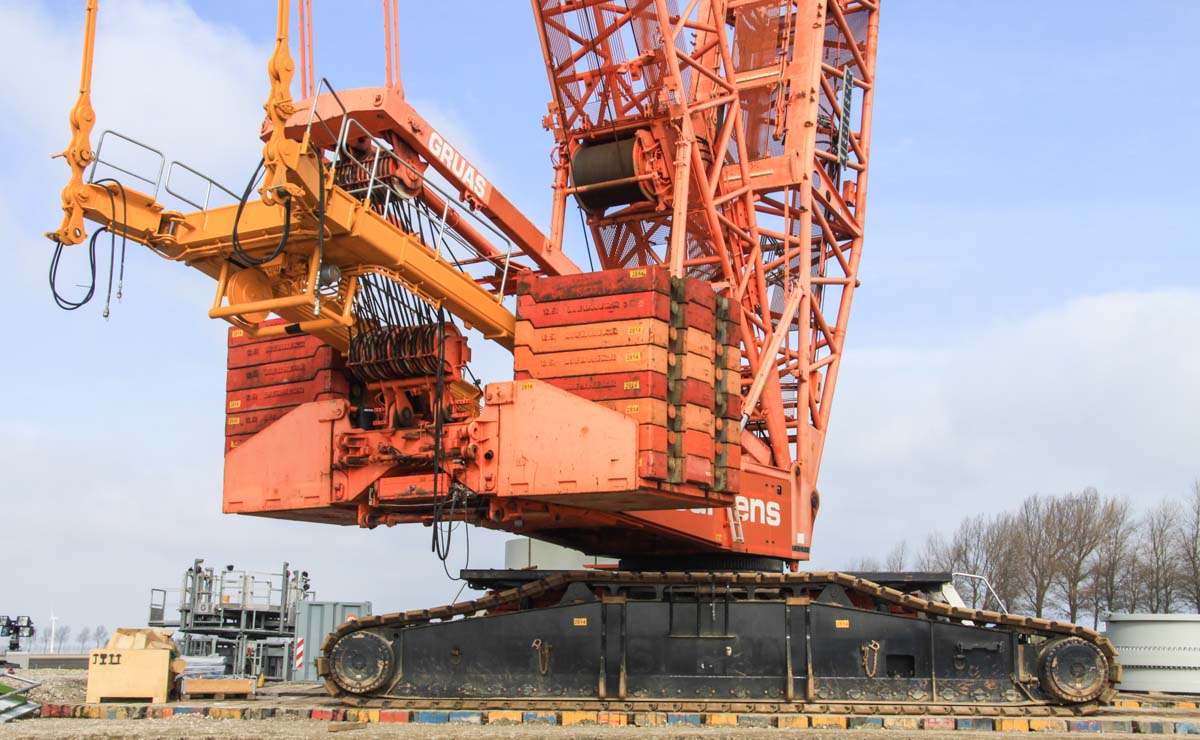
On the superstructure is hanging 220 tonnes of counterweight. Can be increased by 25 tonnes.
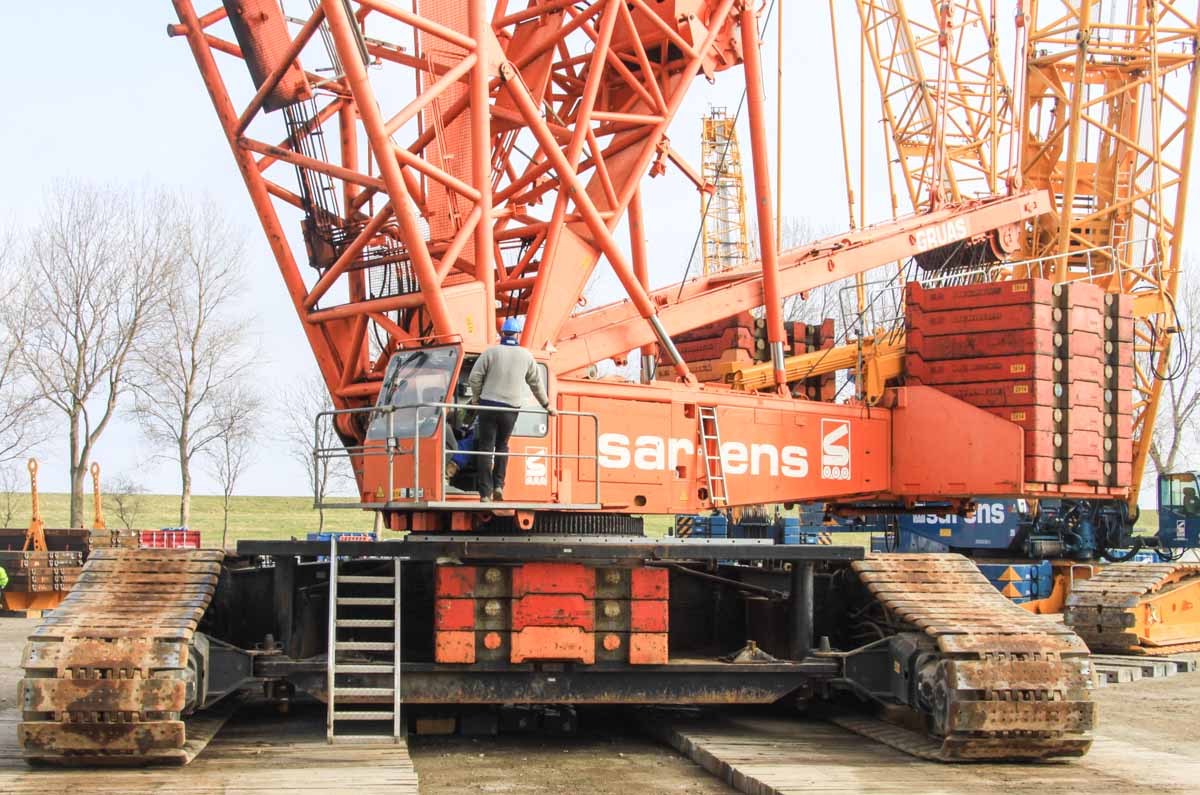
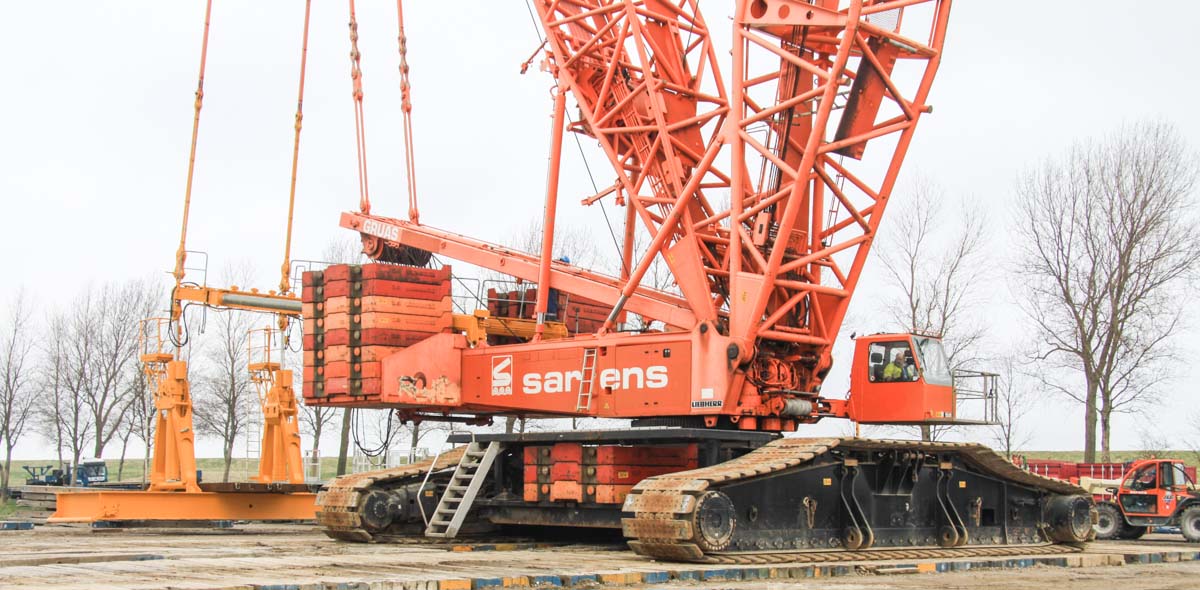
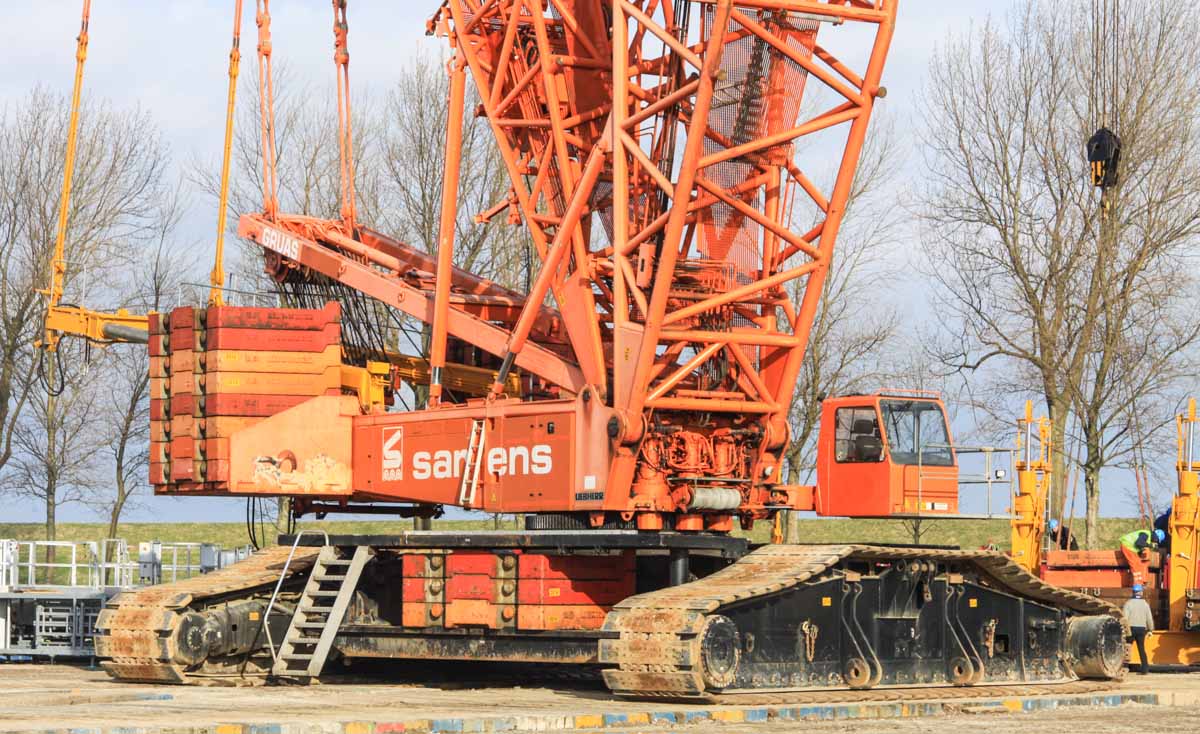
In the background is the counterweight tray stacked with counterweight slobs, they are required to put the boom down. To put down the 146 metre boom are 250 tonnes of superlift counterweight required.
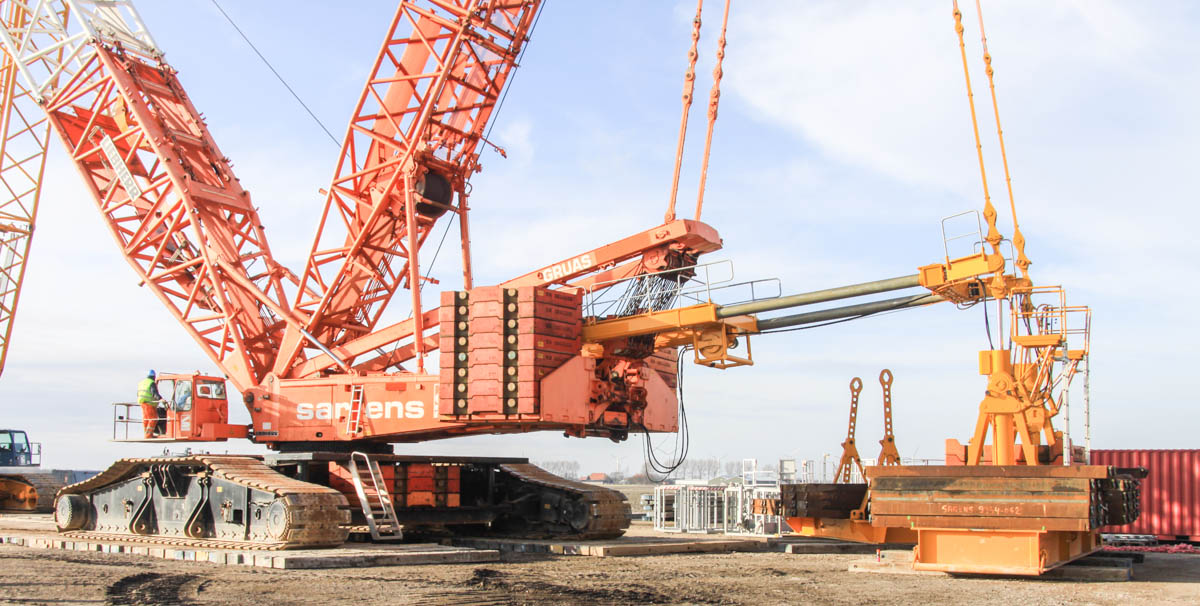
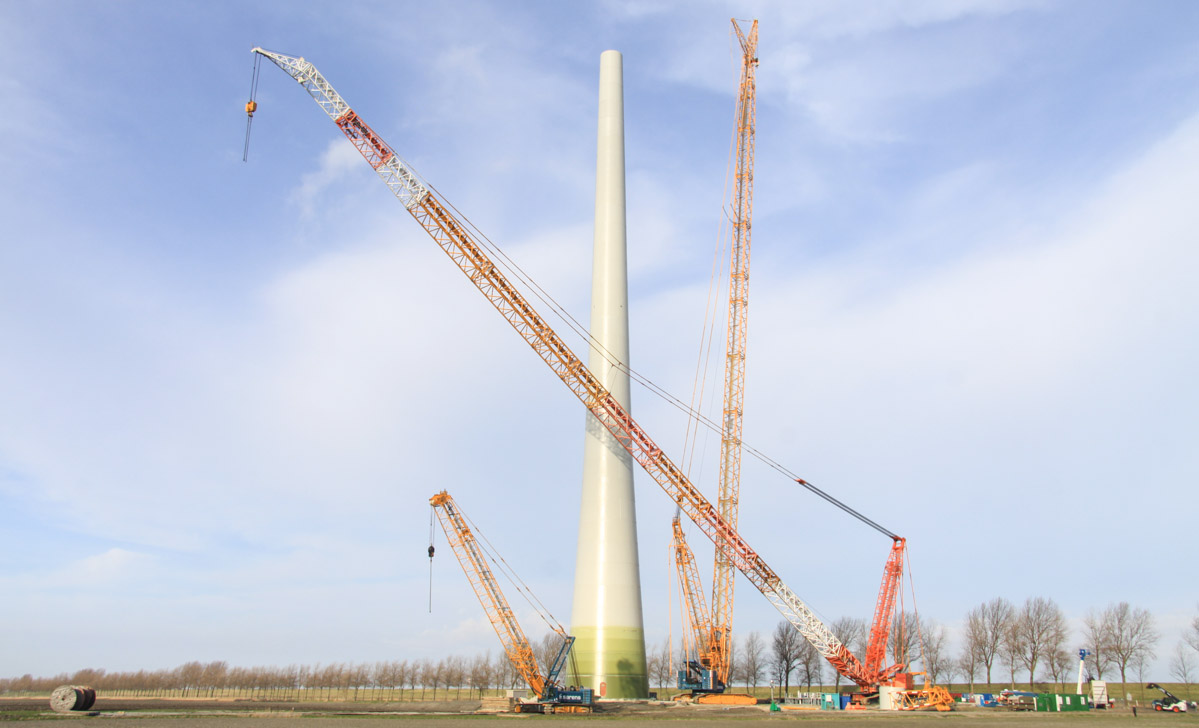
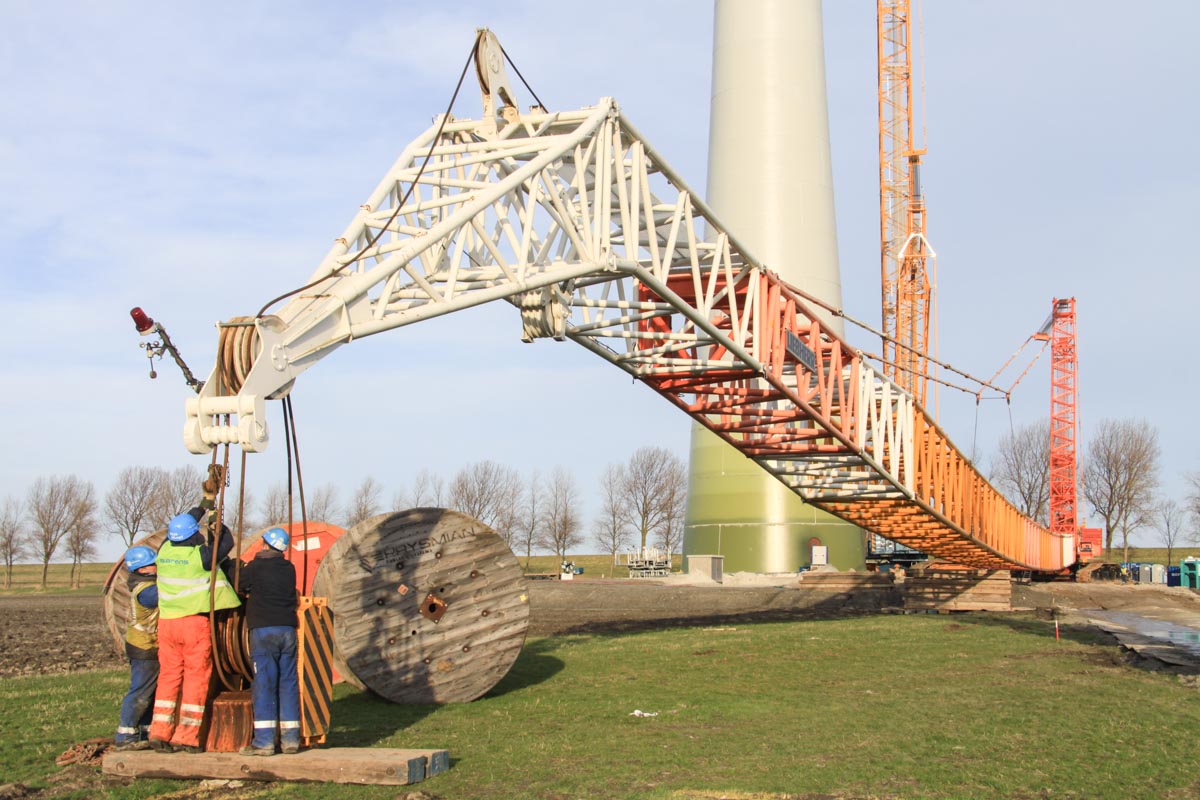
Laying the long boom down is a very nice view.